South American travel diary, Part 4. September 2010
bolivia menttes chile argentina machinalis south-america travel3 September, Starting our hike to Choquequirao
Choquequirao is a lesser known ruined Inca city located on the Salkantay mountains. It can only be visited after a strenuous two day hike, down into the Apurímac valley and then up again on the other side of the mountain. This makes it much less visited and also more mysterious than the famous Inca ruins at Machu Picchu. So far only about 30-40% of the site has been excavated.
The tour we booked consisted of four days of hiking, two days to Choquequirao and two days back for a total of about 70 km of steep, mountaneous terrain.
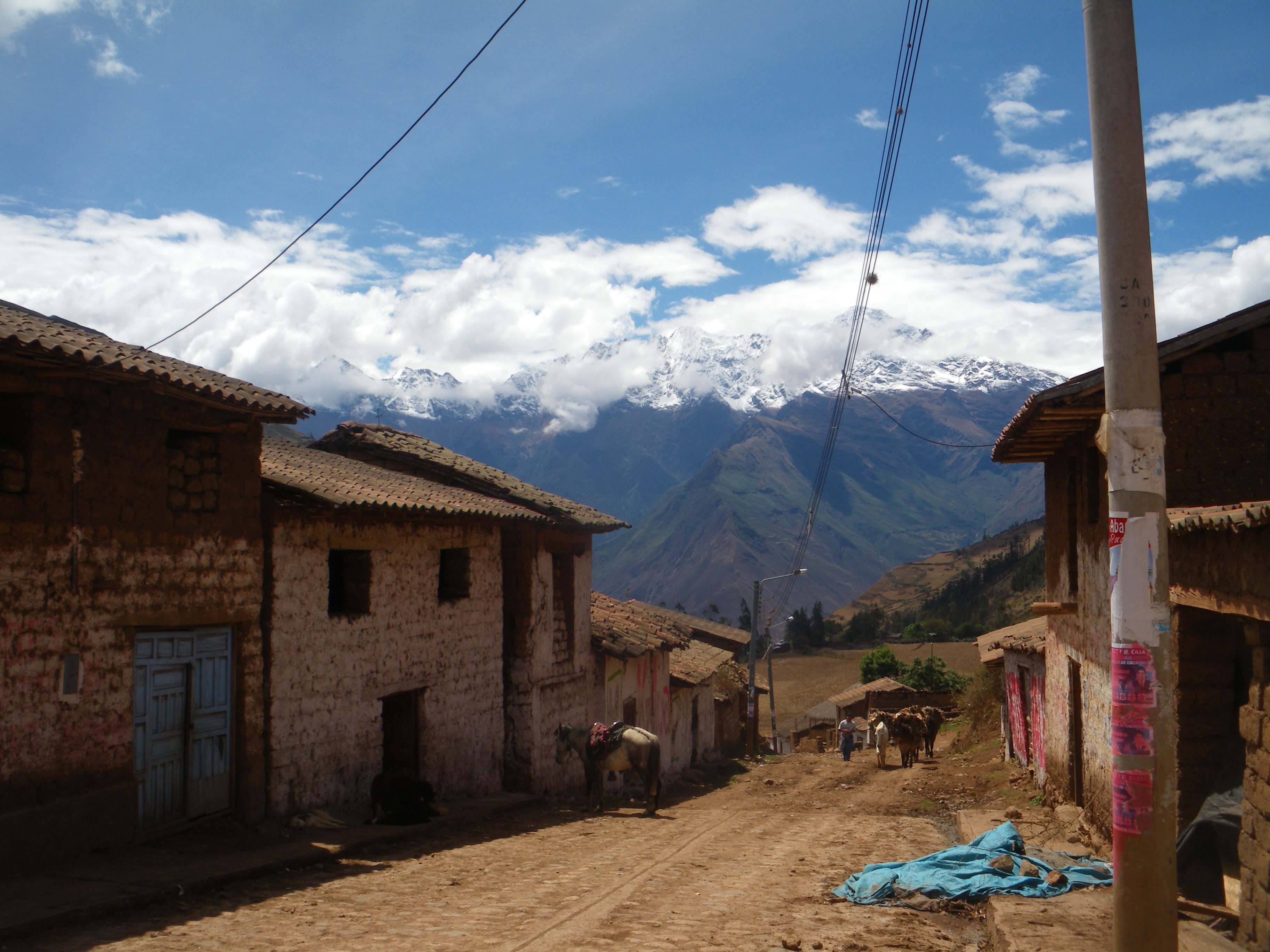
We got up early in the morning and headed by bus to the small town of Cachora, less than 200km removed from Cusco but still about 4 hours of driving on the endlessly curving and car-sickness inducing mountain road.
Cachora is a quaint and very rural town, with just about every building we could identify built out of mud. We waited at the back of a small shop, watching the chickens, pigs and mules in the backyard, as Jesús, our guide and cook, prepared lunch. Inside a dark room to the left was a colony of guinea pigs, most of whom inevitably will end up on someone’s dinner plate someday. I considered eating guinea pig in Arequipa, a local delicacy, but after seeing a photo of a skinned guinea pig spread out on a plate, I decided to pass.
We were supposed to be a group of four people, but at the last minute, the other couple canceled because of food sickness. That meant it was only Manuela and I, Jesús our guide and Milano, the horse-guy, which suited us just fine. Additionally, we had a horse and a mule with us. They carried our luggage, food and the tent, as we headed off to the wild for the next four days. The English speaking guide we were promised, was of course nowhere to be found. Luckily our Spanish skills were by now good enough to understand the important bits and on occasion even make some smalltalk with Jesus, who turned out to be not just a nice guy but also fitter than a marathon runner.
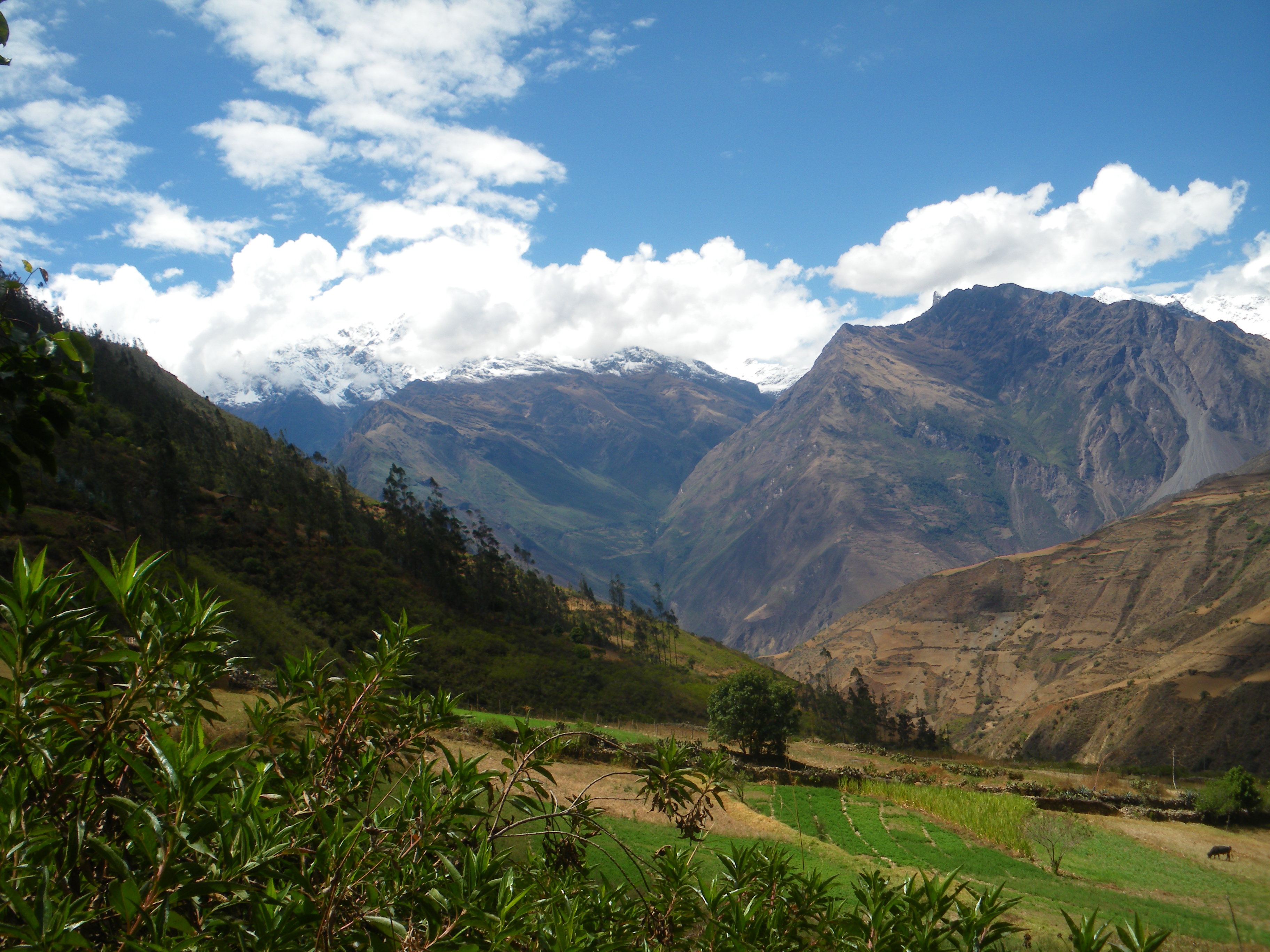
We started our trek at about 12 in the afternoon, heading towards the snow-capped mountains in the distance. The trail went slowly upwards for about 10 kilometers (although this would turn out to be the most level part of the hike), before we descended on the other side of the mountain for another 9 km towards our campsite Chiquiska, near the Apurímac river. On the way we passed small farms and little huts with corn on plastic sheets lying next to them in the sun. The corn will be fermented to create Chicha, the local beer that dates back from Incan times. We stopped at one of the huts and bought a whole jug of the grainy, fizzy and little bit sour beer, for only 1 sol (about €0,30).
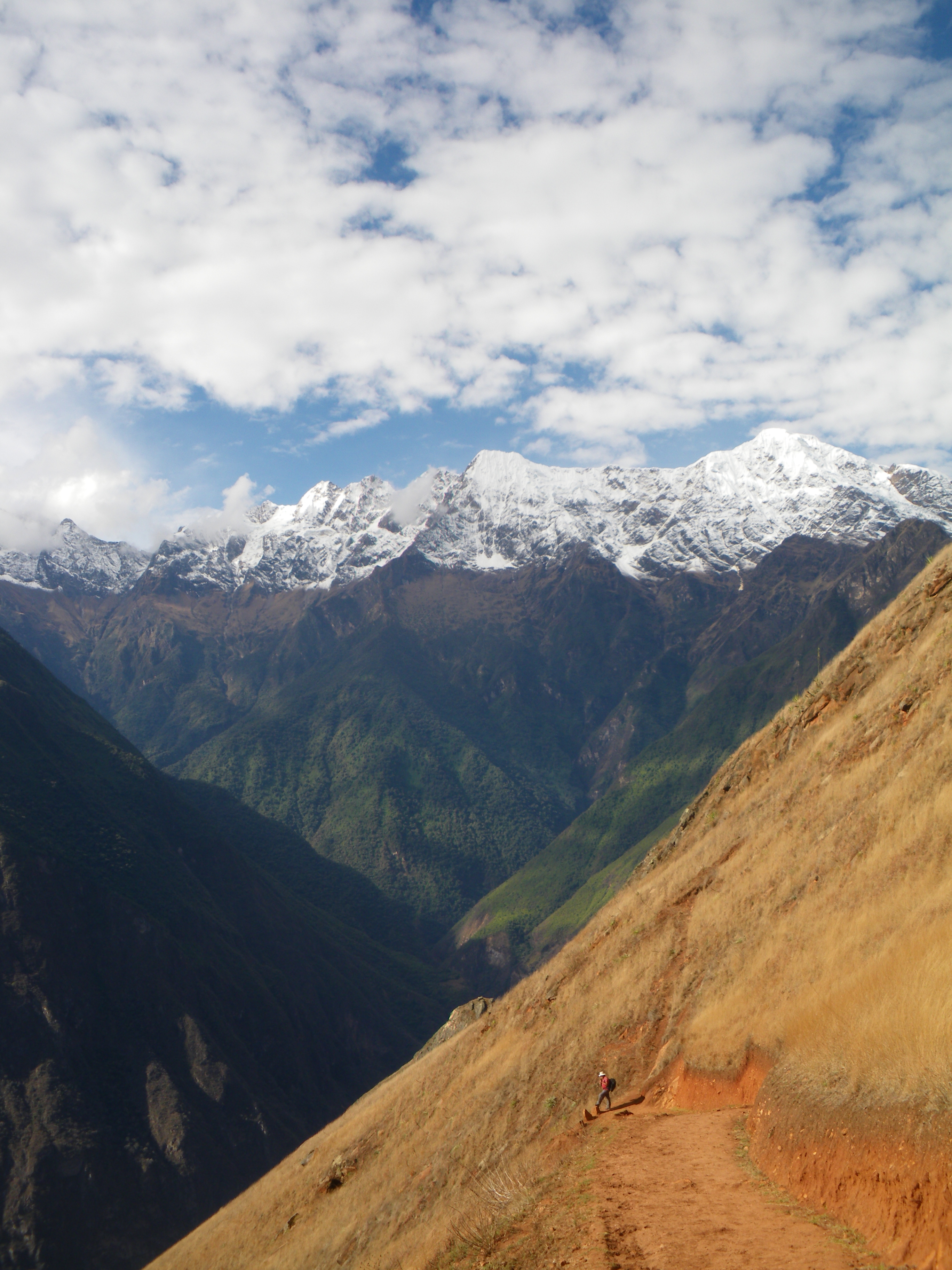
Jesús told me that they also have a stronger variant made out of fermented sugar cane. As luck would have it, we met a local farmer with his mule and his wife coming up the mountain. He happened to have some sugar cane chicha and generously offered it to us. We drank some of the stronger chicha, made a bit of small talk and then went our separate ways, them continuing up the mountain and us going down towards the river.
We arrived at our campsite just before dark, to discover that we would be the only people sleeping there. We were camping at an oasis near the river, surrounded by banana and papaya trees. Facilities were basic open outdoor showers (also known as hose pipes) and a hole in the ground as a toilet. We had a fresh papaya straight from the tree, before we unpacked our stuff and sat down to dinner. We were amazed at Jesús’ ability to prepare a hearty and tasty three-course dinner in the wilderness with his limited supplies and no electricity.
That night, Jesús and Milano slept out in the open on wooden benches as Manuela and I went to bed in the relative luxury of our sleeping bags in a small domed tent.
4 September, Choquequirao
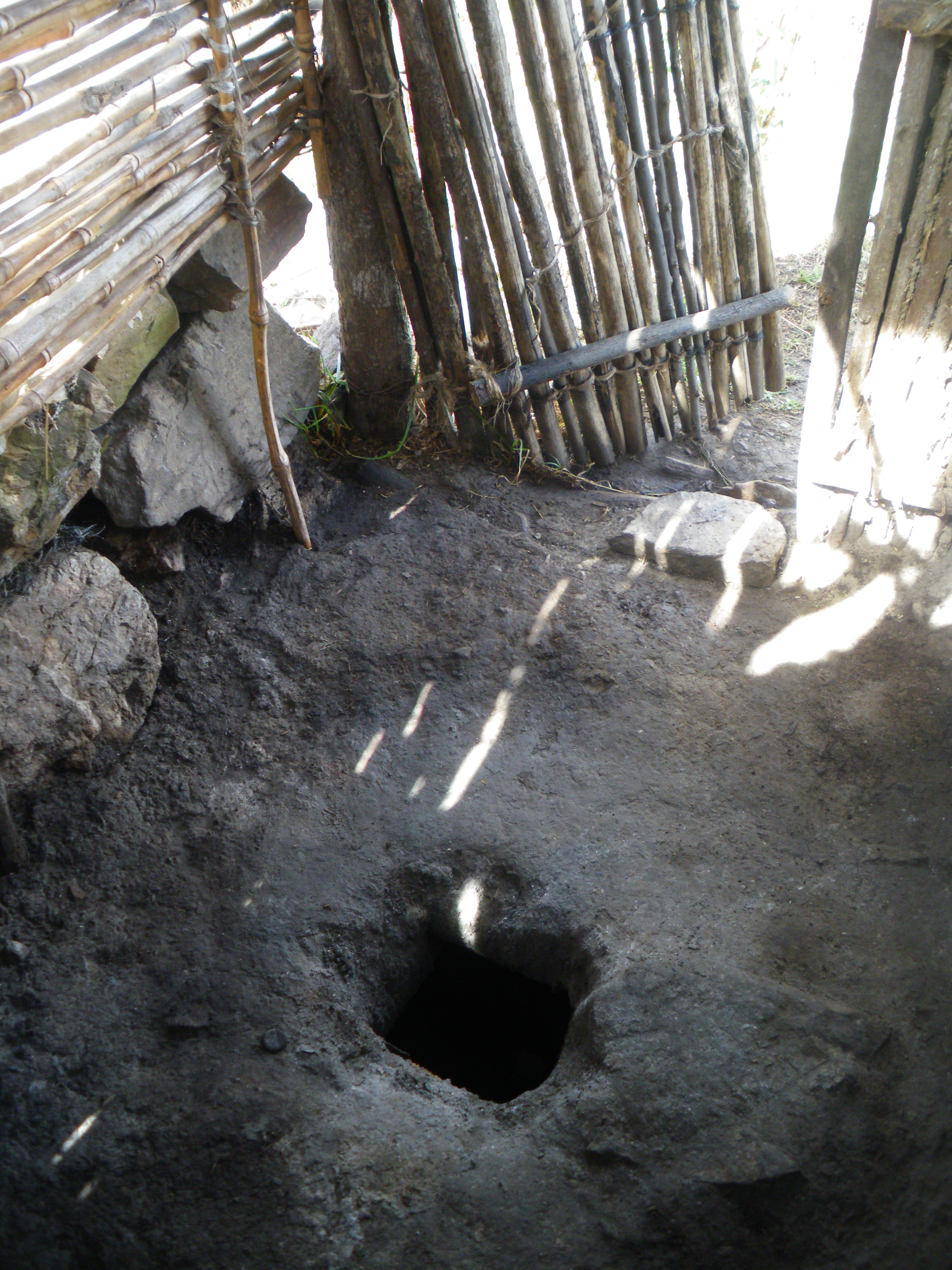
For the second day, we had to cross the Apúrimac river and hike back up the mountain on the other side. This turned out to be the toughest day of the hike, and Manuela got very angry at me for all the time anticipating the end around the corner only to find another steep zig-zag going further up the mountain.
At about noon, after 5 or 6 hours of hiking upwards, we reached a relatively level clearing with a small village of less than a 50 inhabitants. The houses were made of mud and there was no electricity or running water except for a mountain stream from which the locals channeled water using hose pipes.
We ate lunch under a roof next to one of these houses and then tried to rest for a while before we would have to continue trekking another 2 hours to the lost city of Choquequirao.
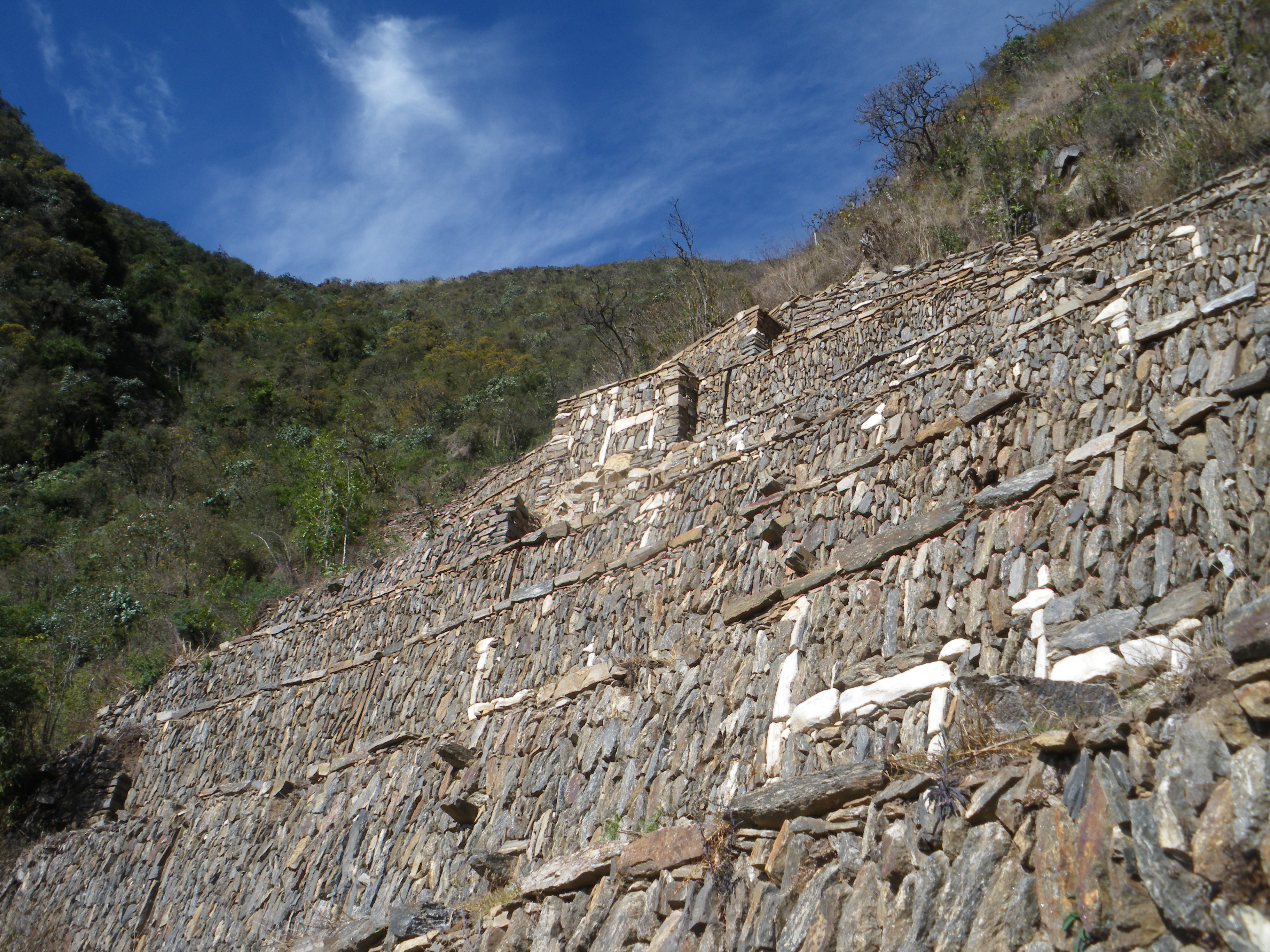
Choquequirao is situated in an absolutely stunning area and its clear that the Incas had an eye for choosing spectacular locations to build some of their cities. The beauty of these locations convinced them of their sacredness, and on a small hill next to the city they made a flat and round clearing (like a heli-pad) where they held their rituals. Standing in this clearing, with a 360° view of the mountains on all sides and the river cutting through the middle, was a very special experience that made the tough hiking all the more worth it.
Jesús and I then walked down towards the terraces on the other side of the mountain to look at the llama pictures made in the rock walls. The original way down was a long series of stone steps that would have to be hell to walk back up again. Luckily there is now also a hiking path going back up.
As mentioned before, Choquequirao is only partly excavated, and it was possible to go into the bushes next to the excavated buildings and see more walls, houses and other structures hidden between the thick vegetation. There were only 4 other tourists at the site that afternoon and we could roam the whole area undisturbed and entranced by the magical surroundings.
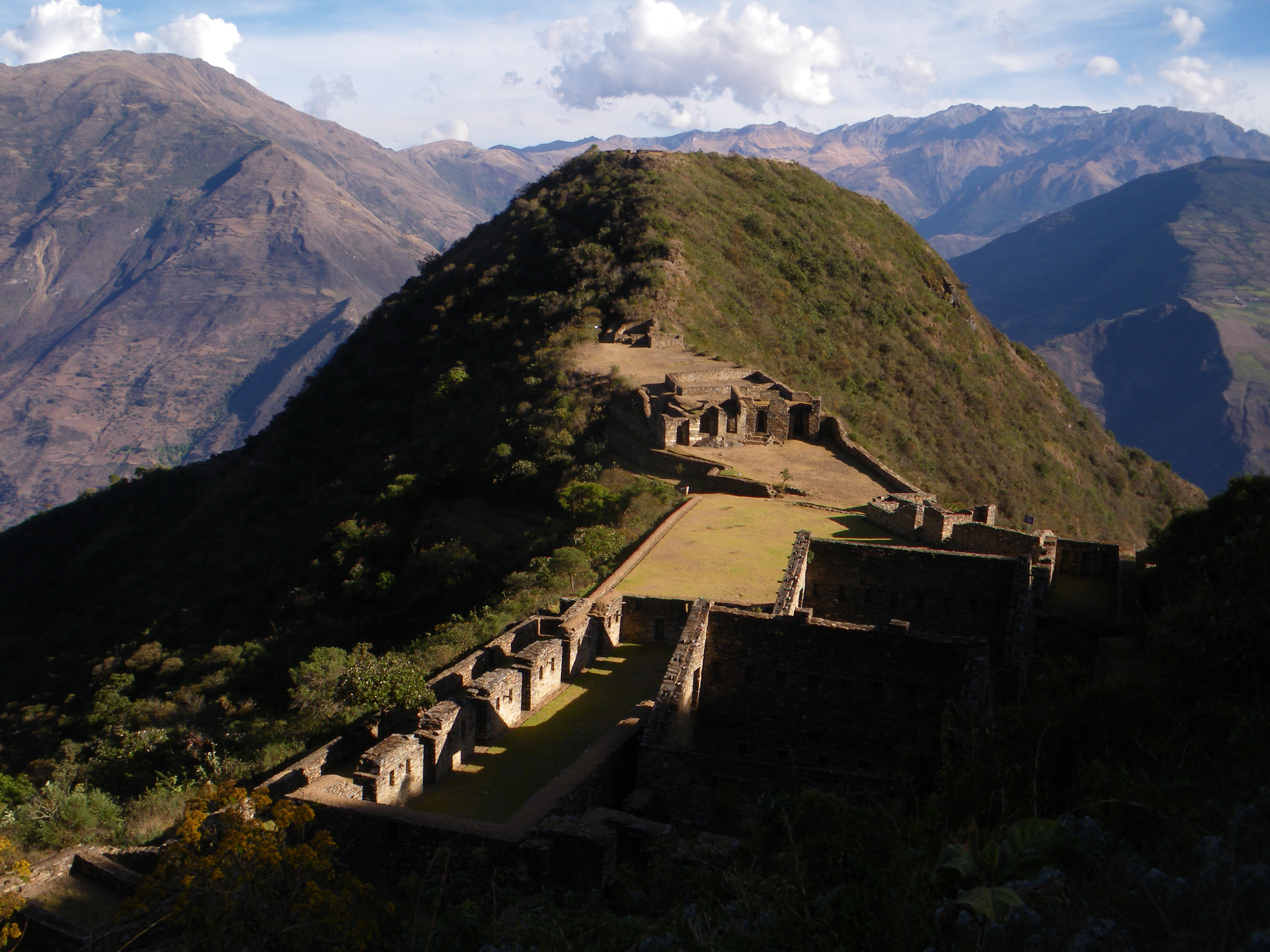
We stayed as long as we could and then started hiking back to the previous village were we would overnight. The hike lasted well past sunset and into the night and Manuela remarked on how we started the days hike before sunrise.
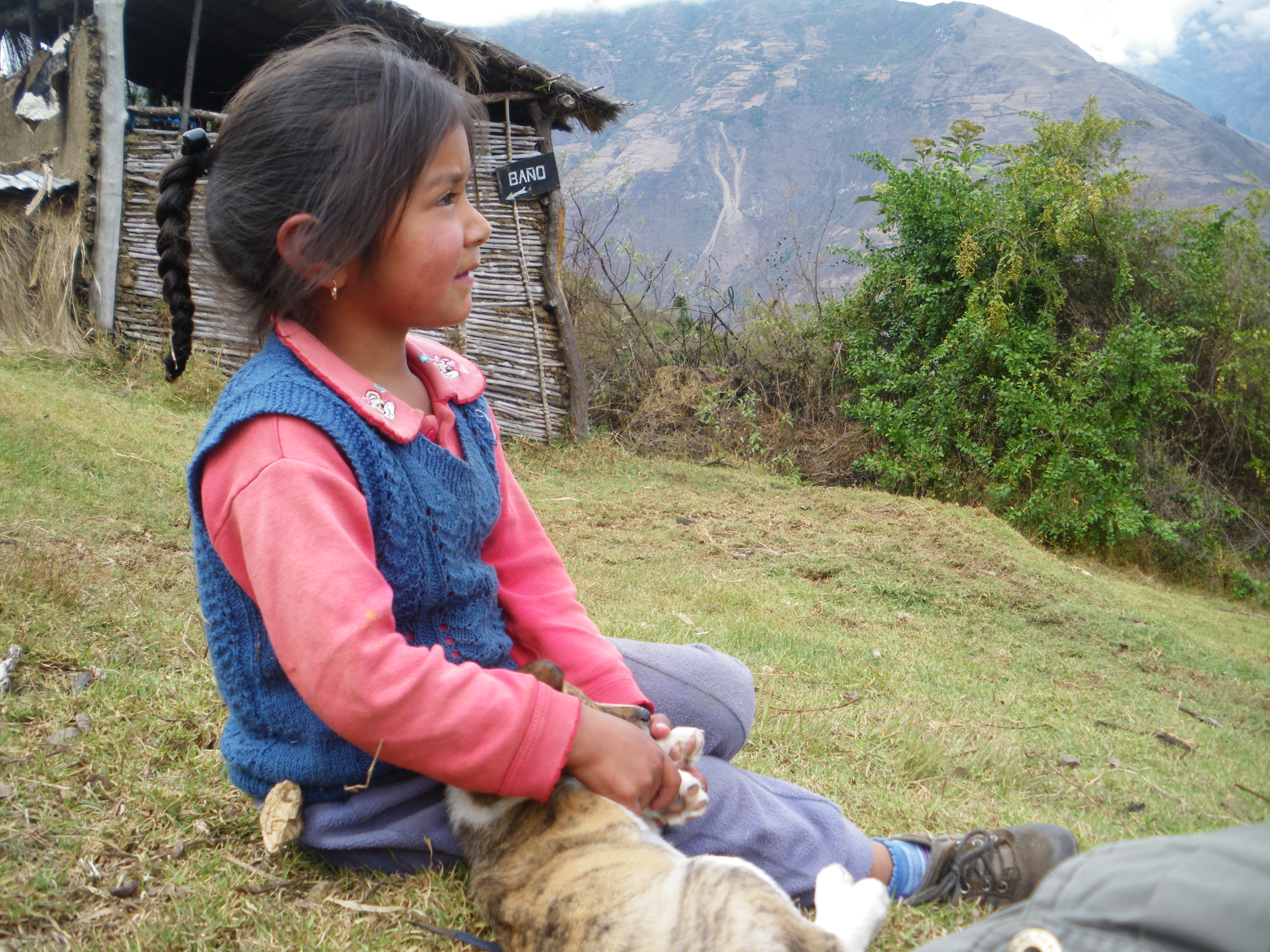
That night, Jesús prepared a delicious soup that he claims is a family tradition and we lay on the grass to look at the stars as we did the previous night down by the river. They were more vivid than I’ve ever seen before, and that includes star-gazing in the desert in Namibia and near the observatory in Sutherland, South Africa.
5 September, Choquequirao
On the third day, we had to hike back down the mountain, up the other side past our old camping site to another site further up. On the way, we stopped at a small mud house and shop were Jesús and I drank two vases of locally brewed Chicha beer before continuing onwards.
That night we camped next to a small two room mud house, were a local woman and her husband lived. We had dinner inside the bigger room, which functioned as a living-room, bedroom and kitchen in one, as the wife tended to an open fire and heated up some left-overs for the just returning husband. We were humbled by the simple and secluded lives that these people live, up in the mountains and far away from the trappings of modern society.
That night we had a special show held for us by the fireflies flickering neon green in the darkness and spread out all over the mountain.

6 September, Choquequirao
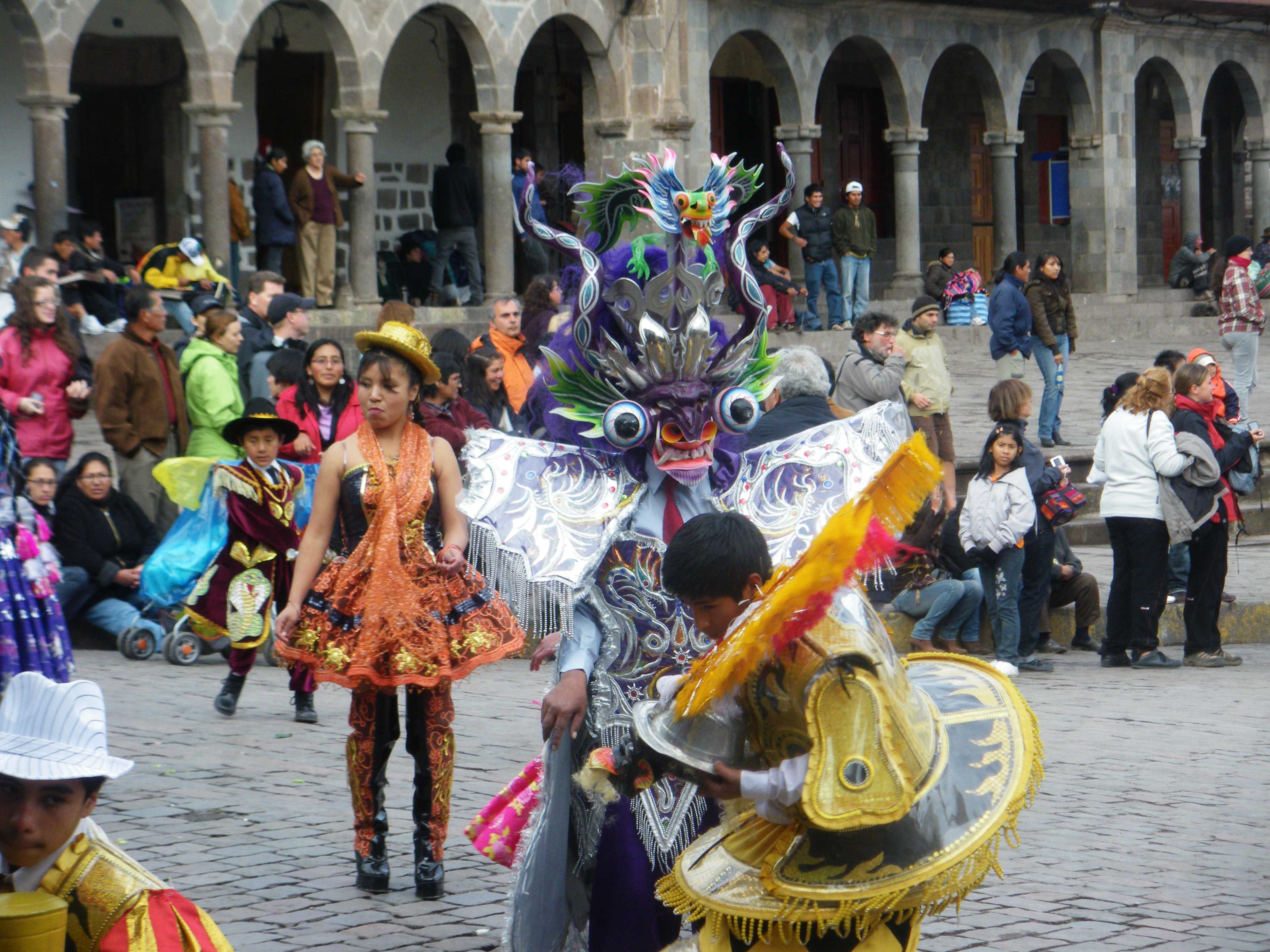
We had half a day of trekking left before we reached the town of Cachorra again. We left early and hiked up the mountain in thick mist that prevented us from seeing more than a few meters ahead. It was about 6 difficult kilometers up the steep mountainside, before we reached the top and hiked another 10 level kilometers to town.
The last four days’ hike was tough but definitely worth the effort. We visited a lost city located in a spectacular location which left us amazed and inspired. In the process we learned a lot about ourselves, about rural Peru and the difficult yet simple life up in the mountains.
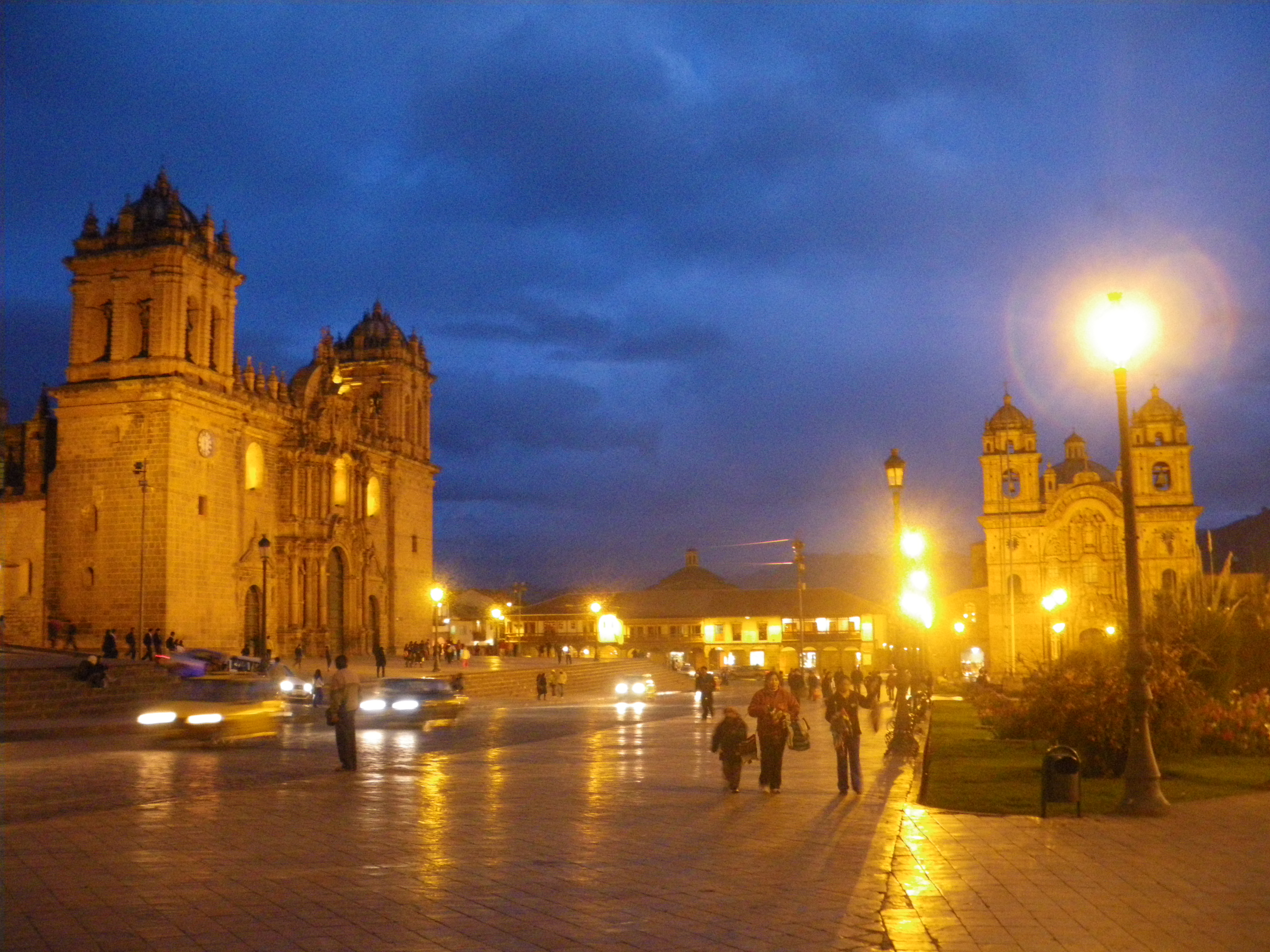
10 September, Traveling to Machu Picchu
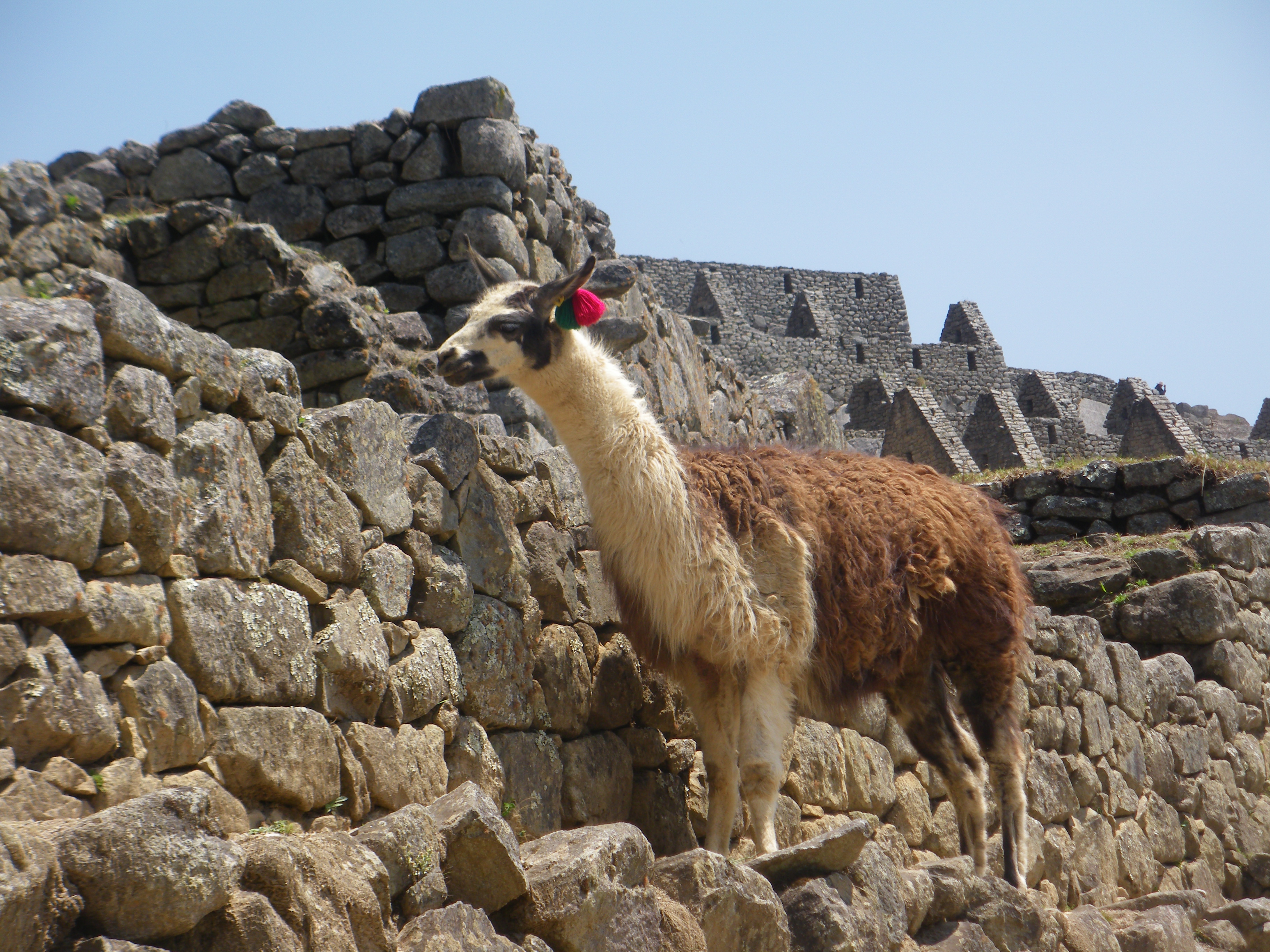
After spending a few days resting in Cusco again, we prepared to leave to the famous Inca ruins of Machu Picchu. For many travelers, Machu Picchu might well be the main attraction of their South American trip. I remember being filled with wonder at the prospect of a continent filled with spectacular and mysterious ruins left by enigmatic empires such as the Incas, Aztecs and Mayans.
Machu Picchu itself was every bit as magical as I imagined it to be, but the profiteering, bad service and lies peddled to us by the agency we trusted to get us there, left quite a few fantasies shattered. Reality however sometimes has the effect of tempering a wild imagination.
Not that it would have necessarily have been better going with another agency. Cusco is filled to the brim with tour operators. Any idiot can set up a table with pictures of Machu Picchu and other attractions and start selling tours. And many do. The tours they sell are of course passed along to other operators, and in the process all accountability goes out the window.
Add to this the fact that the only sanctioned way of getting to Machu Picchu (with the exception of hiking for 2 to 3 days) is paying about US$100 for a one way train trip of little more than 100km, and we almost considered leaving the whole thing as it felt a bit too much like a rip-off.
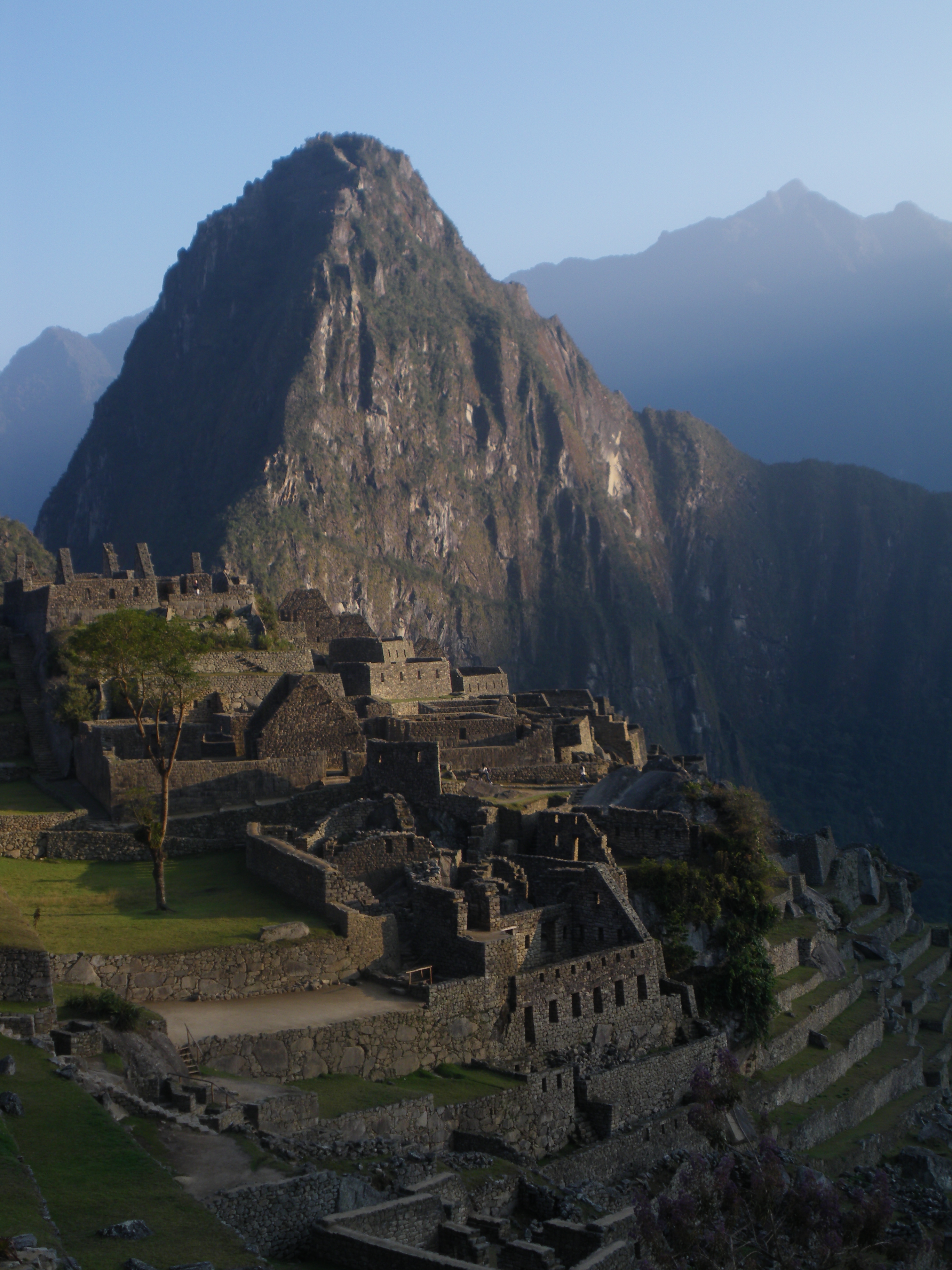
Instead, we thought we found a way to beat the system. A small operator (one of these desk jobbies as mentioned earlier) offered two-day trips to Machu Picchu via bus for about US$115, whereas a normal tour would cost about US$180,
We left the morning very early, 4:30am to be exact, in a small tour bus excited to be on our way to the famous site. The first 3 hours driving turned out to be uneventful, until we reached the top of a mountain pass outside of Cusco. Turns out that we were bundled together with another group who booked a more adventurous tour and that they would now cycle down the mountain while we slowly follow 50m behind in the tour bus. For the next 2 and a half hours, we crawled down the mountain at about 20km per hour with the group of 20 or so cyclists ahead of us. Of course, our “tour agency” completely neglected to impart this little piece of information to us.
After coming down the mountain (with its comparatively good road), the day got progressively worse. Due to delays caused by the cyclists, bad planning and numerous roadworks on the horribly uneven and narrow gravel road through the valley, we reached the town of Santa Thereza for lunch at about 16:00pm with not a single apology or explanation made.
Eventually, after getting into a smaller bus and then afterwards also a train ride, we reached Aguas Calientes, the small tourist town close to Machu Picchu. It must be the most fake and kitsch town we have encountered on this whole trip. Perhaps ever. Everywhere are plastic Incas, kitsch paintings of muscled Incas (abvious rip-offs of 1980s fantasy art such as by Boris Vallejo), and of course someone trying to get you into their (overpriced) restaurant or hotel. Our tour guide on the other hand, couldn’t be bothered to even remove his headphones to properly talk to us.
As mentioned, we left the morning at 4:30am, and arrived in Aguas Calientes at about 8:00pm. Keep in mind that Aguas Calientes and Cusco are only about 112km (in a straight line) apart.
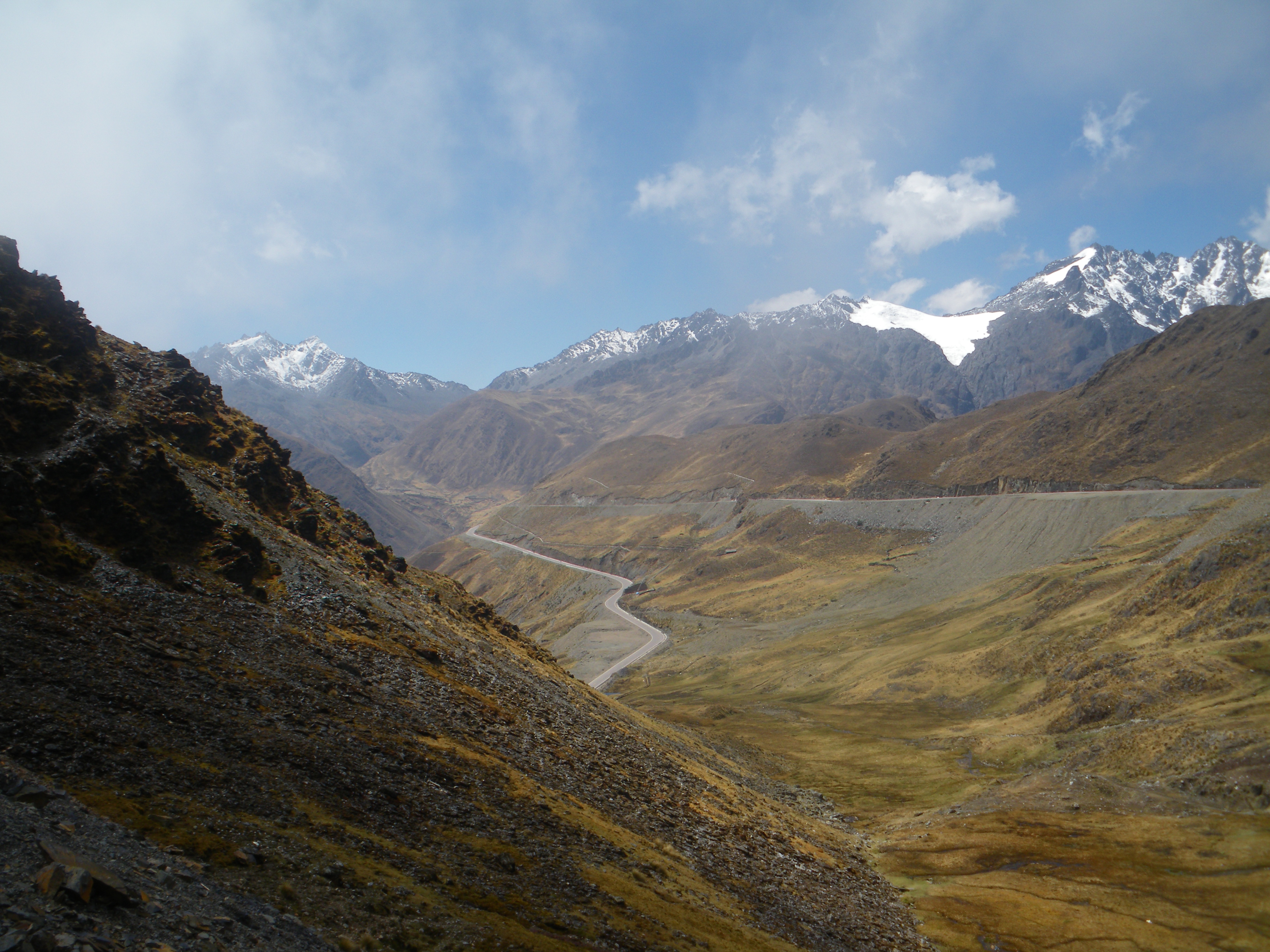
10 September, Machu Picchu
We got up at 3am that morning in order to be among the 400 people who would be allowed to climb Huayna Picchu, the hill next to the lost city.
Walking around the ruins of Machu Picchu made all the effort in getting there worthwhile. The ruins and their location are simply spectacular and not even our half-useless guide could spoil the occasion.

On the way back, even though we were squeezed into a small minibus, the driver decided to make some more cash on the side and drove around Santa Thereza offering a trip to Cusco. Eventually three more locals entered the minibus as well and we continued to Cusco. The drive back was even more horrible than before. Our driver drove carelessly and very dangerously along the mountain passes, so much that we repeatedly had to ask him to drive more carefully. He didn’t give a rat’s ass of course, and continued to speed and cut corners.
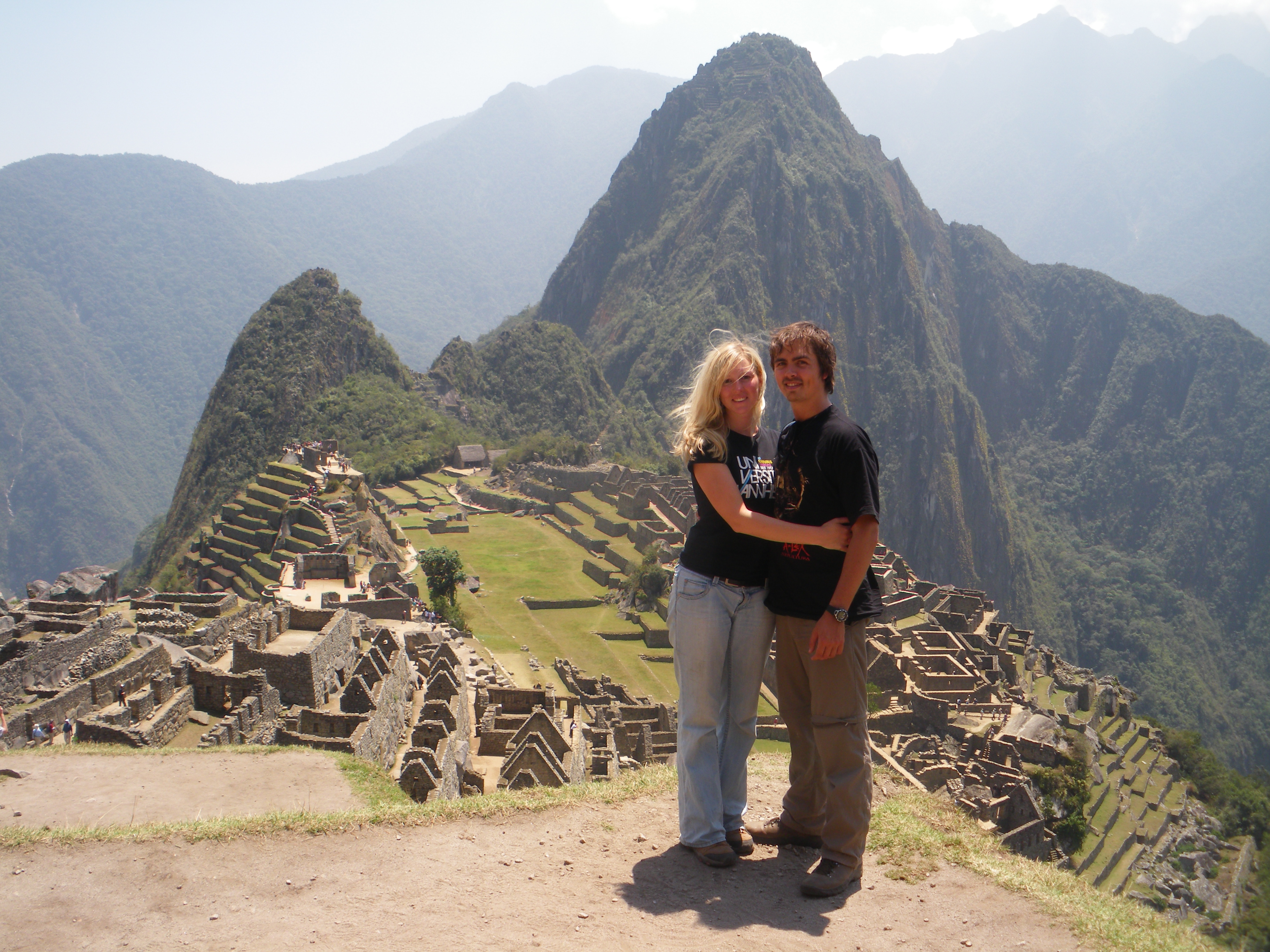
After about 8 hours of driving, when we got closer to Cusco, he suddenly veered off the tarmac and started driving on a rough and uneven dirt road. Turns out that there was some kind of roadblock ahead which he was trying to avoid. Why the hell would he take a big detour on a rough gravel road to avoid a roadblock? Of course he declined to tell us, so we could only guess.
Long story short, Manuela and I were so relieved to be back at our hostel after a frightening and claustrophobic journey of about 9 hours, that we went to the supermarket and bought a whole lot of comfort food. Crisps, chocolate and red-wine. We celebrated still being alive. Moral of the story, don’t take the “bus” to Machu Picchu!
11 September
We went for a massage. Like everything in Peru (and even more so in Bolivia) even though the masseuses really try hard and I can only respect their work ethic, they somehow just lack those finishing touches of professionalism. The CD player doesn’t work, they need to move the tables when a new client comes in and the one girl burnt Manuela with a hot stone. All in all, it was only €6, so still good value for money.
Manuela also received coca cream for her face. This reminded me of an earlier prediction I made to her and which I’ll mention here as well. I predict that within 5 to 10 years, a coca craze or fashion will enter the Western market for especially cosmetics and toilettries. Expect coca toothpaste, facial creams, shampoos and the like. Watch this space ;) Similar to the herbal toothpaste craze of a few years back…
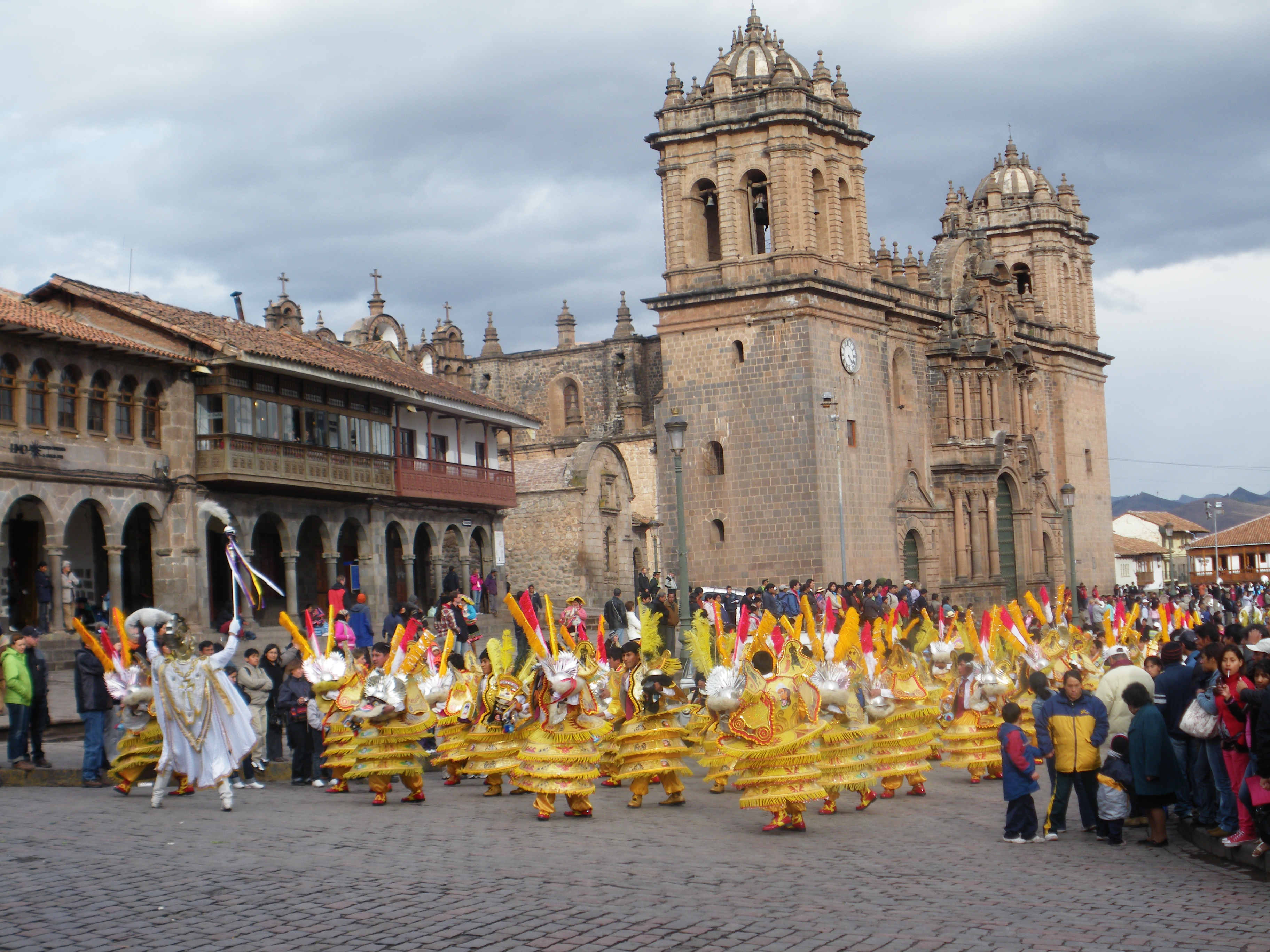
13 September, Leaving to Manu National Park
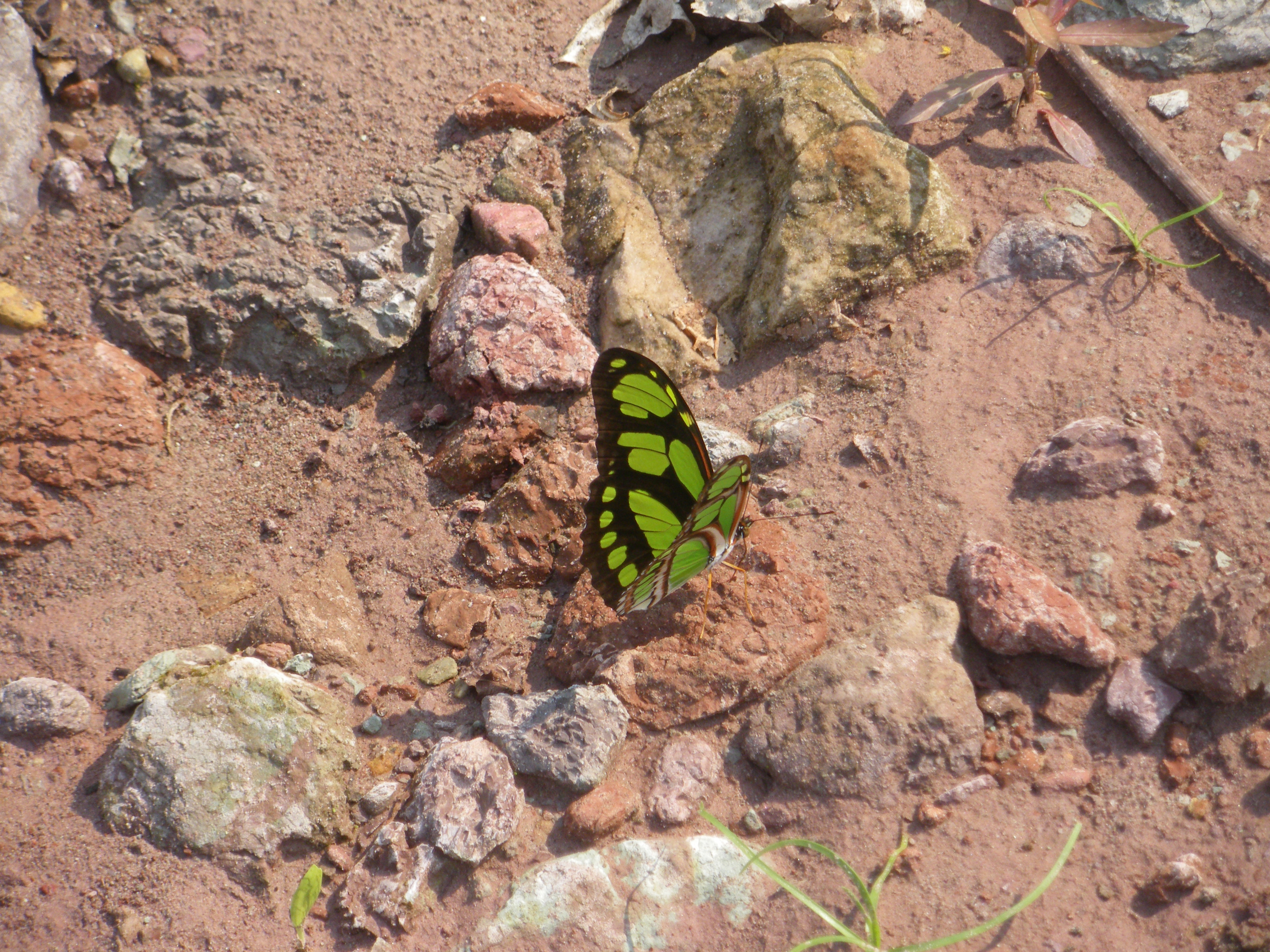
We had already resigned ourselves with the idea of not going to the Amazon during this trip, when Manuela spotted a flyer in Cusco advertising a work and travel opportunity in the Amazon basin in Manu National Park. Originally we considered going to Belém in Brazil, or Iquitos in Peru, but both turned out to be very expensive and the stories of unscrupulous and non-ecofriendly tour operators didn’t impress us much either. This opportunity, presented by an agency called ManuPeruAmazon, seemed to be different however, and after chatting with them at their Cusco office, we signed up for a week of camping in the jungle to help out with volunteering work while also taking part in hikes and boatrides.
Manu National Park is an area which is so difficult to reach that the Spaniards actually never invaded it. They attempted at different times resulting in the loss of many men forcing them to eventually give up. Uncontacted tribes still roam the vast and unreachable interior.
ManuPeruAmazon is the project of Oliver Innocente, an Italian expat, and his Peruvian wife Carolina. Oliver has been living in Peru for about 20 years, most of them spent in the jungle.
After taking a 7 hour bus-ride from Cusco into Manu National park, we arrived at a small town where Oliver was waiting for us. His right hand was bandaged after been stung or bitten by something, most probably a spider. His right thumb, where the bite took place, was completely red and swollen up to more than twice it’s normal size, while his fingers and wrist were also still red and swollen. On the spot where the bite took place, was a large gash with raw flesh peeling out. And this was already 8 days after it happened. This being the jungle, Oliver didn’t have access to medication, not that he wanted any really, and he made exclusive usage of local medicinal plants.
We drove for another half an hour to a small river port town and Oliver showed us the biggest pea I’ve ever seen. The pips are covered in a white fluff, which was quite tasty.
From the port we took a motorized wooden boat on the Madre del Dios, an important tributary of the Amazon river, downstream into the jungle and towards our camping place. It was an amazing experience.
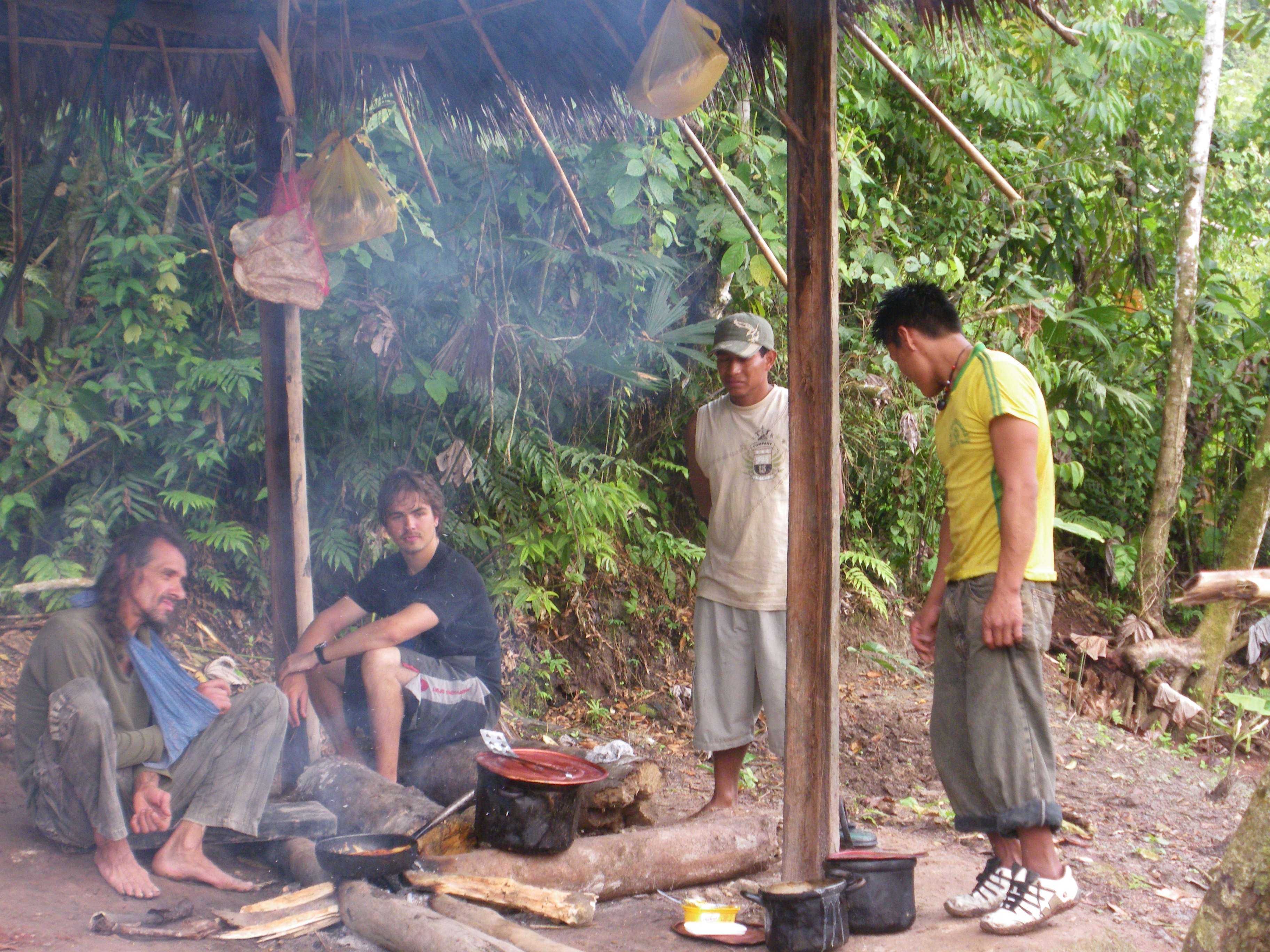
The campsite itself was literally 4 small domed tents and two reed and grass structures to provide shade. For the next 5 days we would have to wash in the river and digg a small hole every time we needed a toilet. This was exactly the experience I was hoping for, something more basic and away from the other tourists and tour guides who treat them like wallet owning cattle.
Oliver was given this particular plot of land (more than a 100 hectares) by the Peruvian government only two months ago, to facilitate its rehabilitation after being damaged earlier by a large landslide. He already had grand plans for reintroducing different plant species, creating a botanical center and also facilities for students and scientists to come and study the jungle. About 60 meters up, there was another campsite, with a thatched roof where Carolina would prepare food. We were convinced relatively early that Oliver was genuinely concerned with protecting the local environment and that he cared deeply for the jungle. He spoke with great respect of the local natives who still live in the Amazon and about their beliefs and knowledge of the environment.
This first nigth at the campsite we saw little glowing green eyes, moving between the plants and the darkness. These irridescent green dots were on the backs of so-called click beetles, named after the clicking sound they make when you capture them. This, coupled with the everpresent symphony of the jungle, countless other beetles, crickets, critters, bugs and birds, created a truly magical first night in the Amazon.
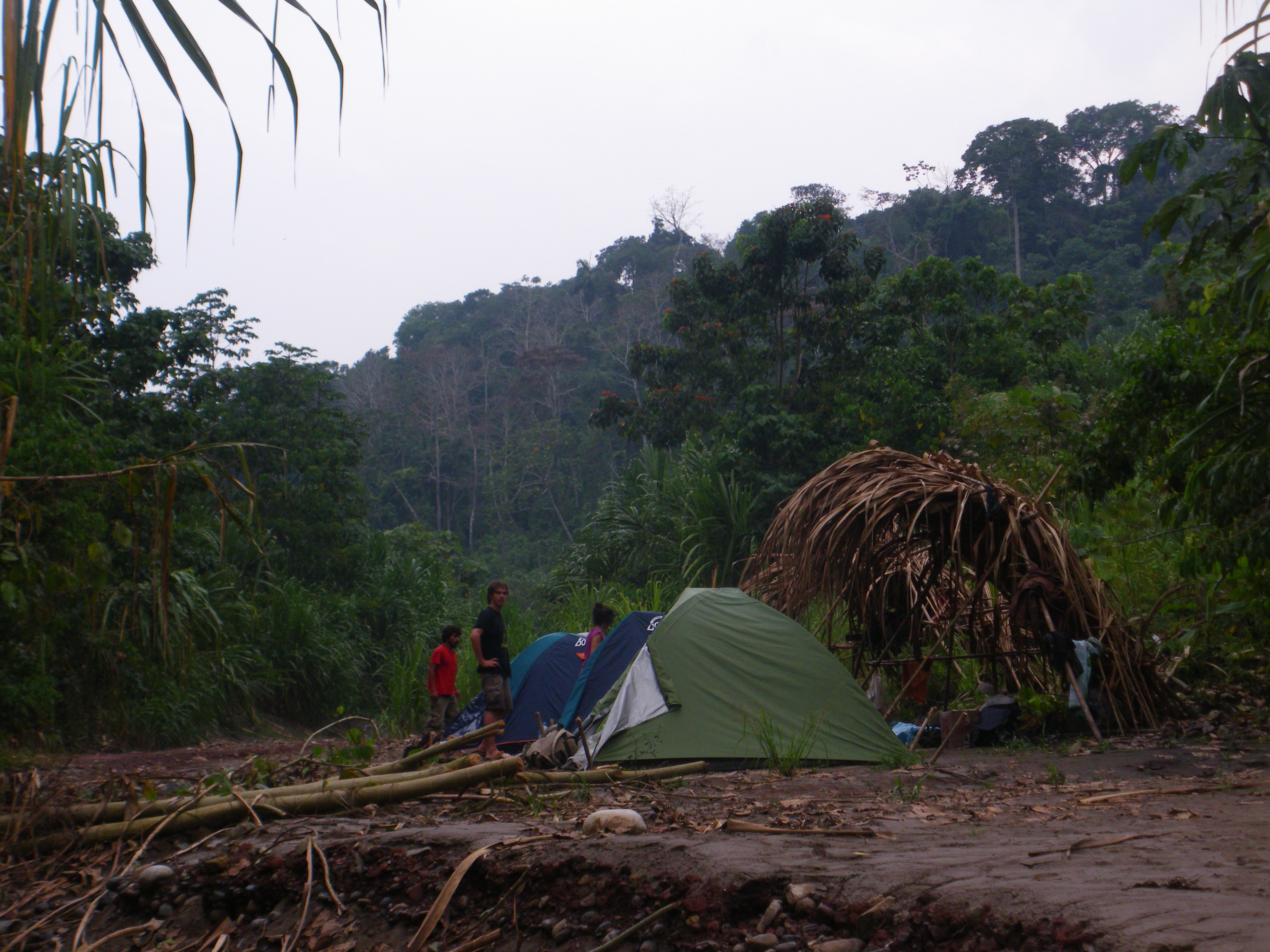
14 September, Working and hiking in the Amazon
On this day we got up at about 5 in the morning and went to the clay walls where blue headed parrots licked clay to ingest minerals in order to counter the toxins of some of the unripe fruits they eat.
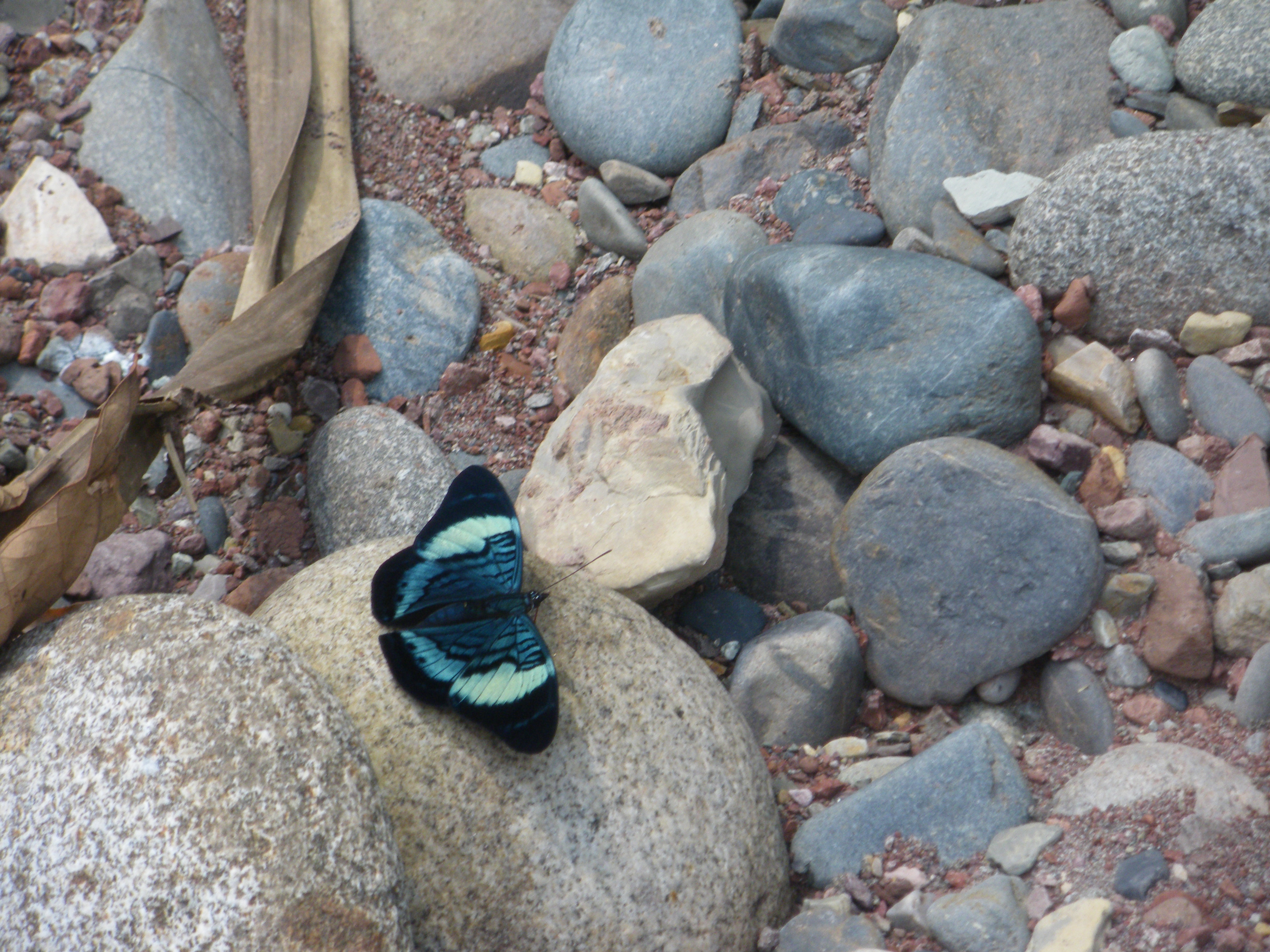
Our campsite was right next to the river and there were still pools of water near the tents. Numerous butterflies of many different shapes, colours and sizes asssembled near these pools. Some were very large and yellow, others were adorned with intricate patterns of a beautiful dark blue, while another kind was a kind of unearthly neon green. They contributed a whole bouquet of different colours to the jungles’s palette of infinite shades of green.
The path towards the topmost campsite was steep and at certain spots difficult to climb. One of the first things that needed to be done, was to build steps on these steep parts and Tony and I volunteered to start working on this. At the upper campsite, there was also a small nursery, made out of halved bamboo reeds, where Manuela and Sofia helped to clean the reeds and plant new seeds.
Using shovels in the damp sand, we relatively quickly created the initial steps, but in the jungle humidity and hot sun we sweated like never before.
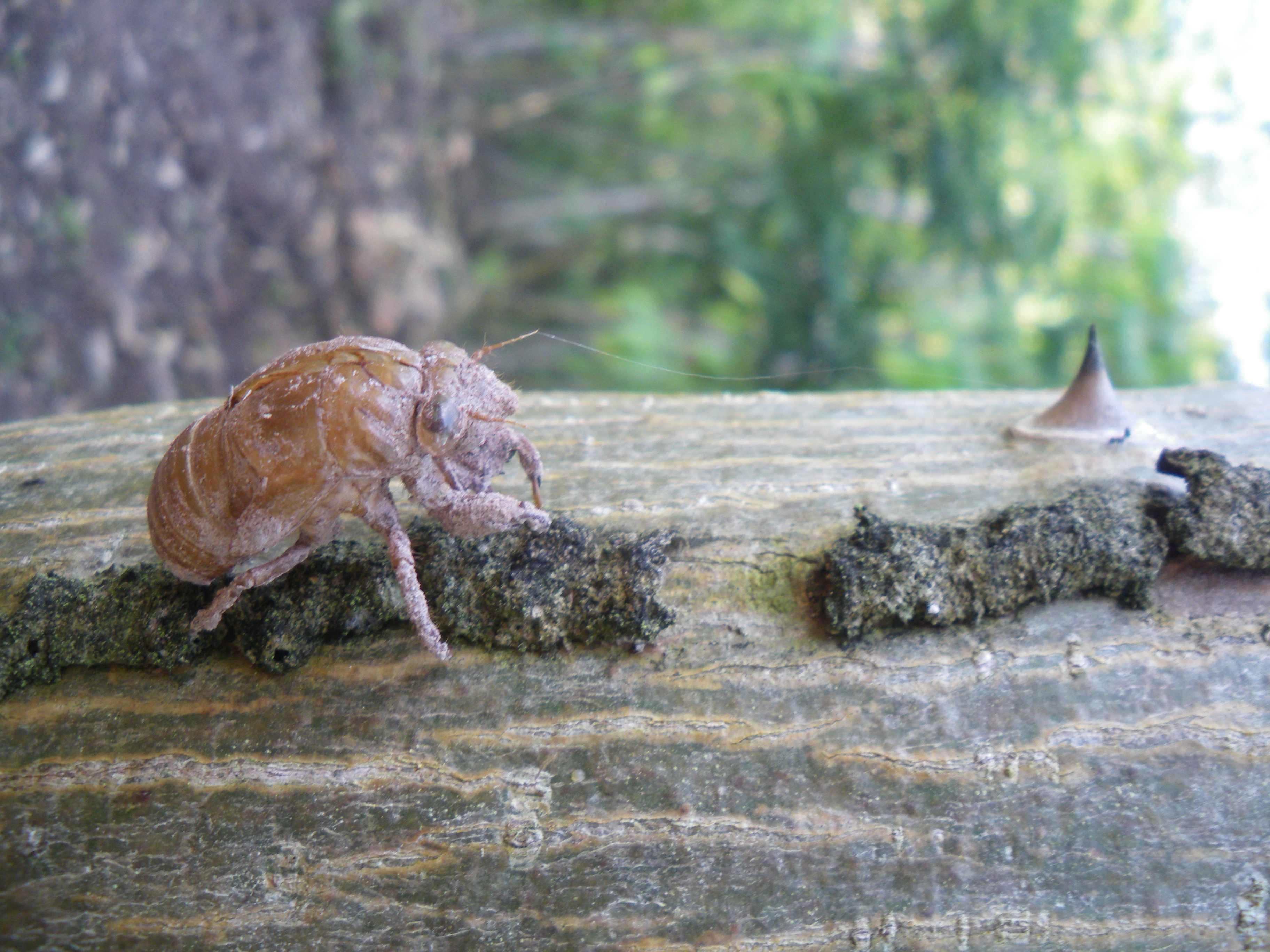
After doing volunteer work in the morning, we ate lunch, relaxed for a whlie and then took the boat downriver to start a four hour hike starting on the other riverbank. We hiked for about an hour and a half, through swamps, under gigantic leaves (called Elephant ears) and under very tall trees where we saw some squirrel monkeys. Eventually we reached a small lake bordered by an imposing wall of thick impenetrable jungle up to 40 meters high. We took a so-called “catamaran” (basically just a wooden barge) on the river and for the first time, we were so quiet, slowly floating on the still water, that we could really appreciate the countless birds on the lake, undisturbed by our presence. On the one side of the river, a Capybara was relaxing and everywhere where the Huatzin (German “Schopfhuhn”) and other birds.
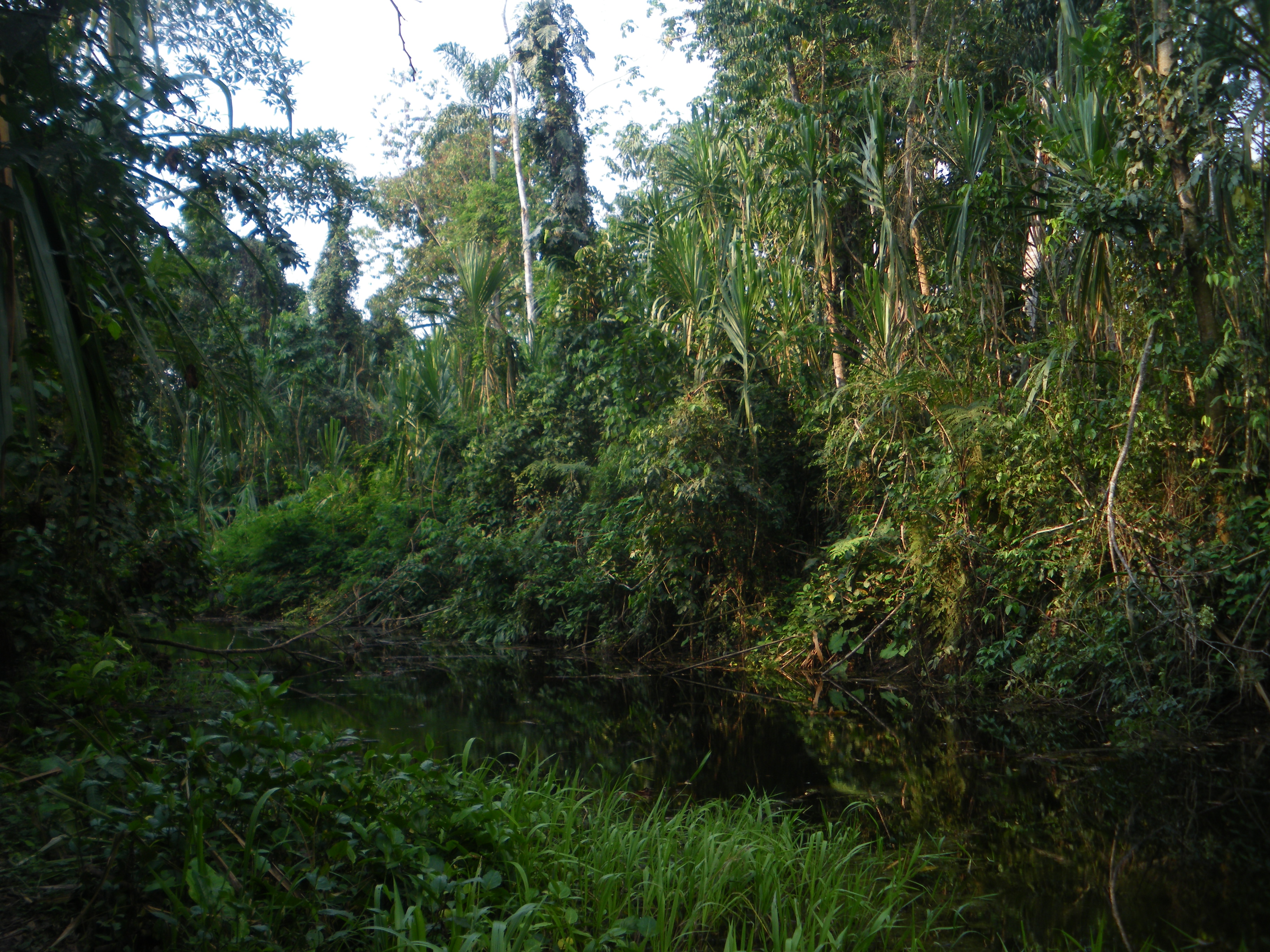
We arrived back at the campsite when it was already dark and becoming clear that a thunderstorm would soon be breaking out. For the last half an hour we saw impressive displays of lightning interspersed with loud ominous thunder, betraying the massive size of the clouds moving above us. The wind was so strong, that first Tony’s and Sofia’s and then our tent collapsed and we hastily had to pack our stuff and hike away from the river bank to the upper campsite to avoid the danger of a rising river during the night.
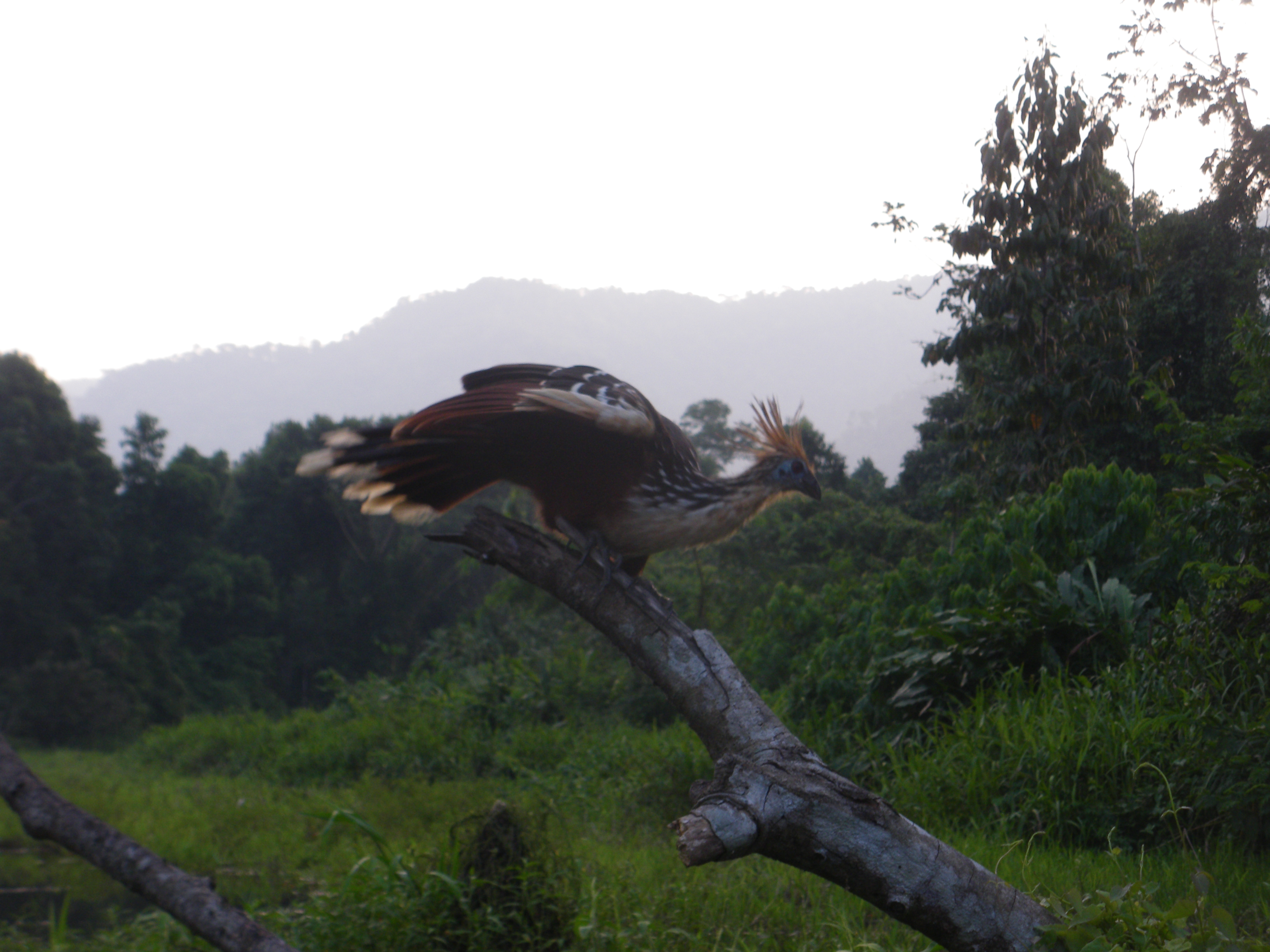
As we reached the upper campsite, the wind picked up in strength and it started to rain. The strong wind teared holes into the sides of the large tent housing our dining area. The winds were by now so strong that we were at risk of falling trees and more than once we had to run outside and stand in the relative safety of a clearing. The branches of some trees were now breaking off, and once I had a narrow escape as a large sharped edged branch came flying past me as I came out of the tent. Eventually the wind started to quiet down, while the rain continued through the night and into the next morning.
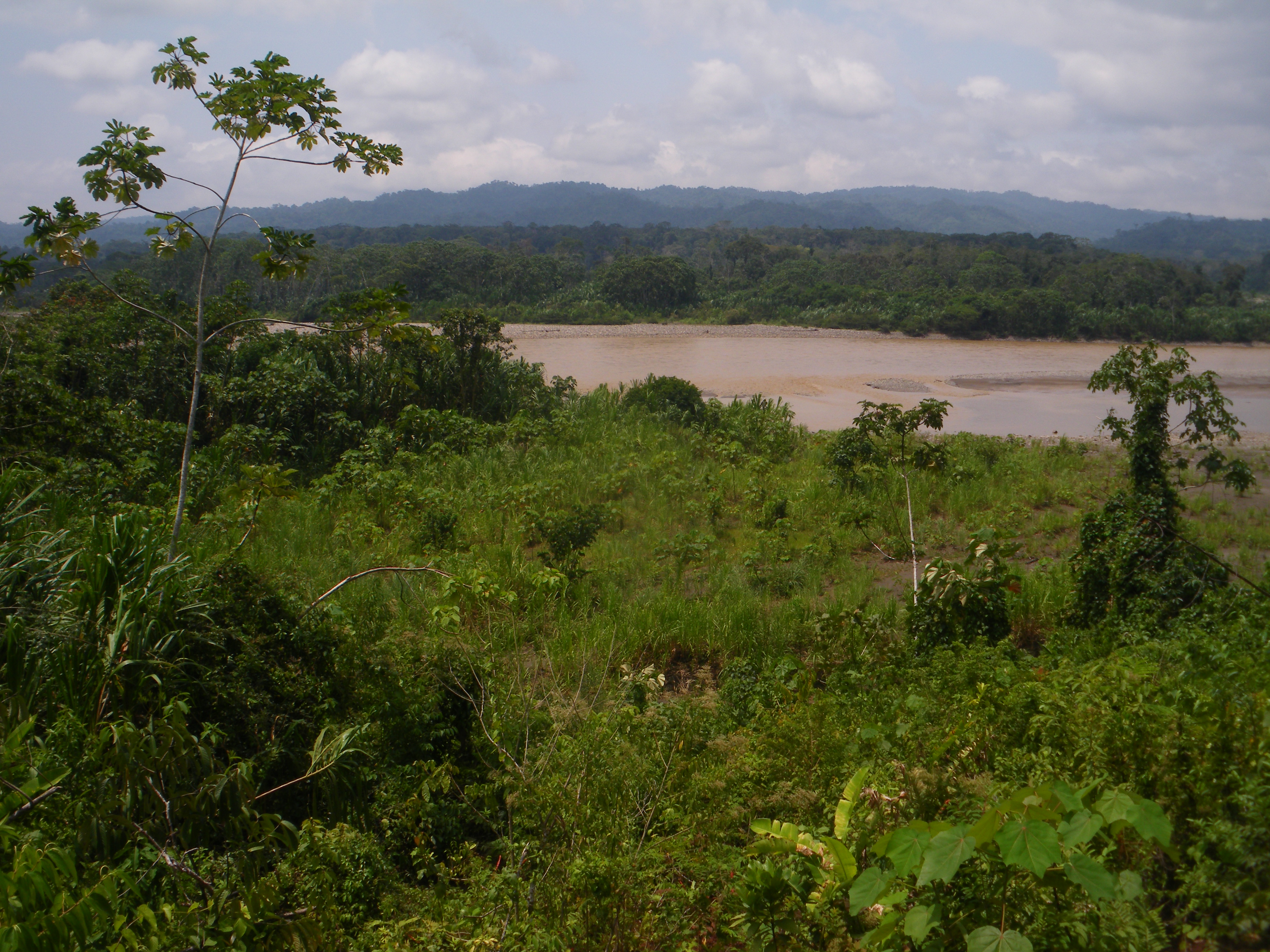
15 September, Tabacco ceremony
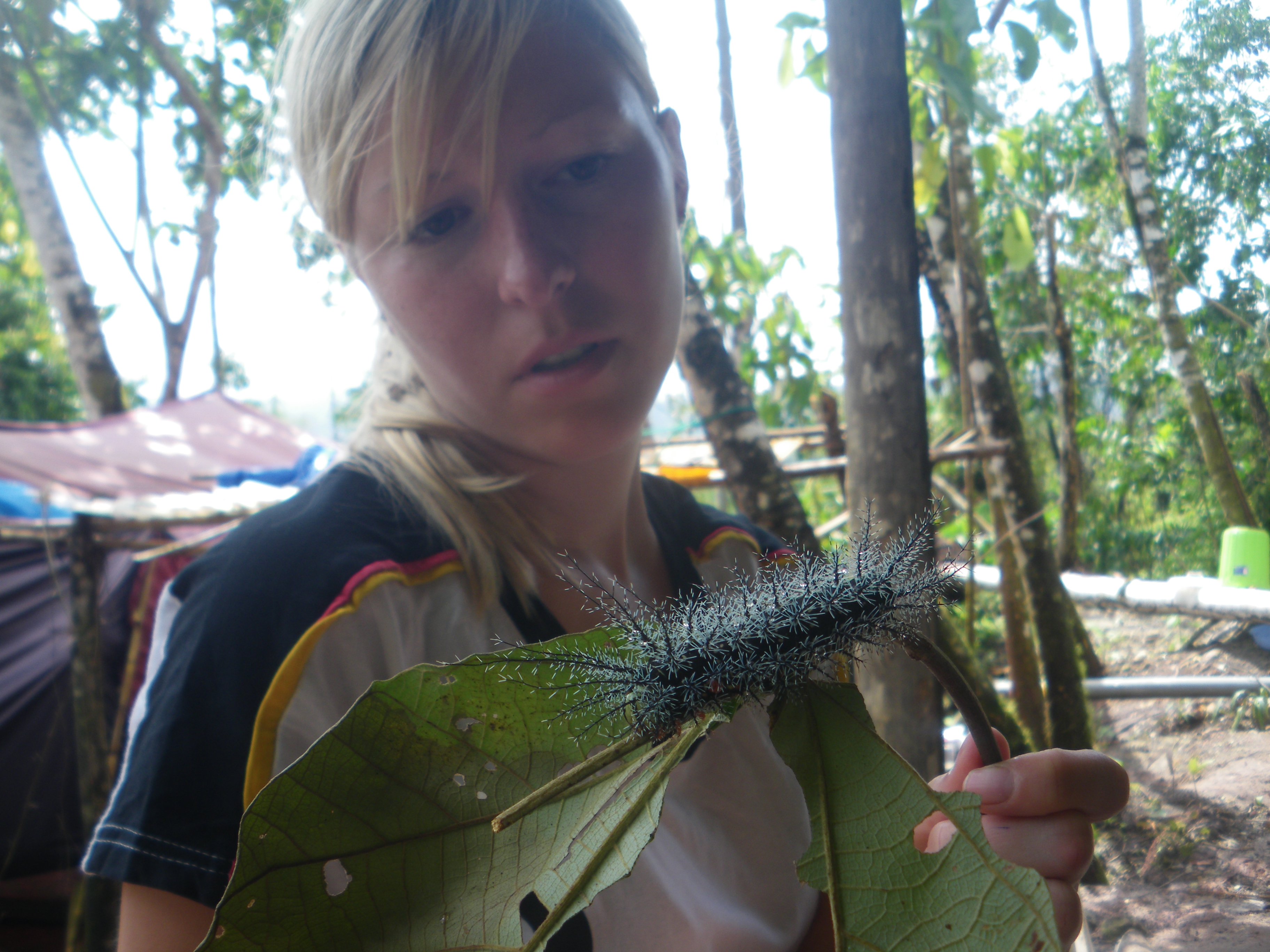
It is quite interesting to experience the rich, lush and fertile jungle, while simultaneously also it’s hostility. Sandflies and mosquitos are an everpresent nuisance, biting the skin and causing itches and sores. One tree’s bark causes irritation on the skin while many others are covered in dangerous thorns. All the worms we encountered are covered in large hairy spikes that are not to be touched, while poisenous plants and fruits abound. Yet, we drank water from a local stream, without the need of even a purifier, while the tap water of most of South America is off limits.
Previously Thomas, a polish volunteer who was already at the campsite when we arrived on the first day, went out to pick some wild jungle tobacco and let it dry out in the sun. The local people use the tobacco in a ceremony as a medicinal plant, during which the participants drink boiled tobacco water, together with about 5 litres of water, until they throw up, thereby cleaning and purifying their stomachs. Thomas offered to prepare the tobacco for us and all four of us decided to take part in such a ceremony. It was an interesting experience and each of us threw up in the end. I felt weak and tired directly after the ceremony, but a little while later I regained my strenght and headed down to continue working on the steps.
Coming down the steps, I saw a big Tayra otter, directly in front of me. It snatched what seemed to be a banana left there by someone and then disappeared into the bushes. It was amazing, every time leaving the camp, you could discover animals, birds or insects of which you never had an idea before,
16 September
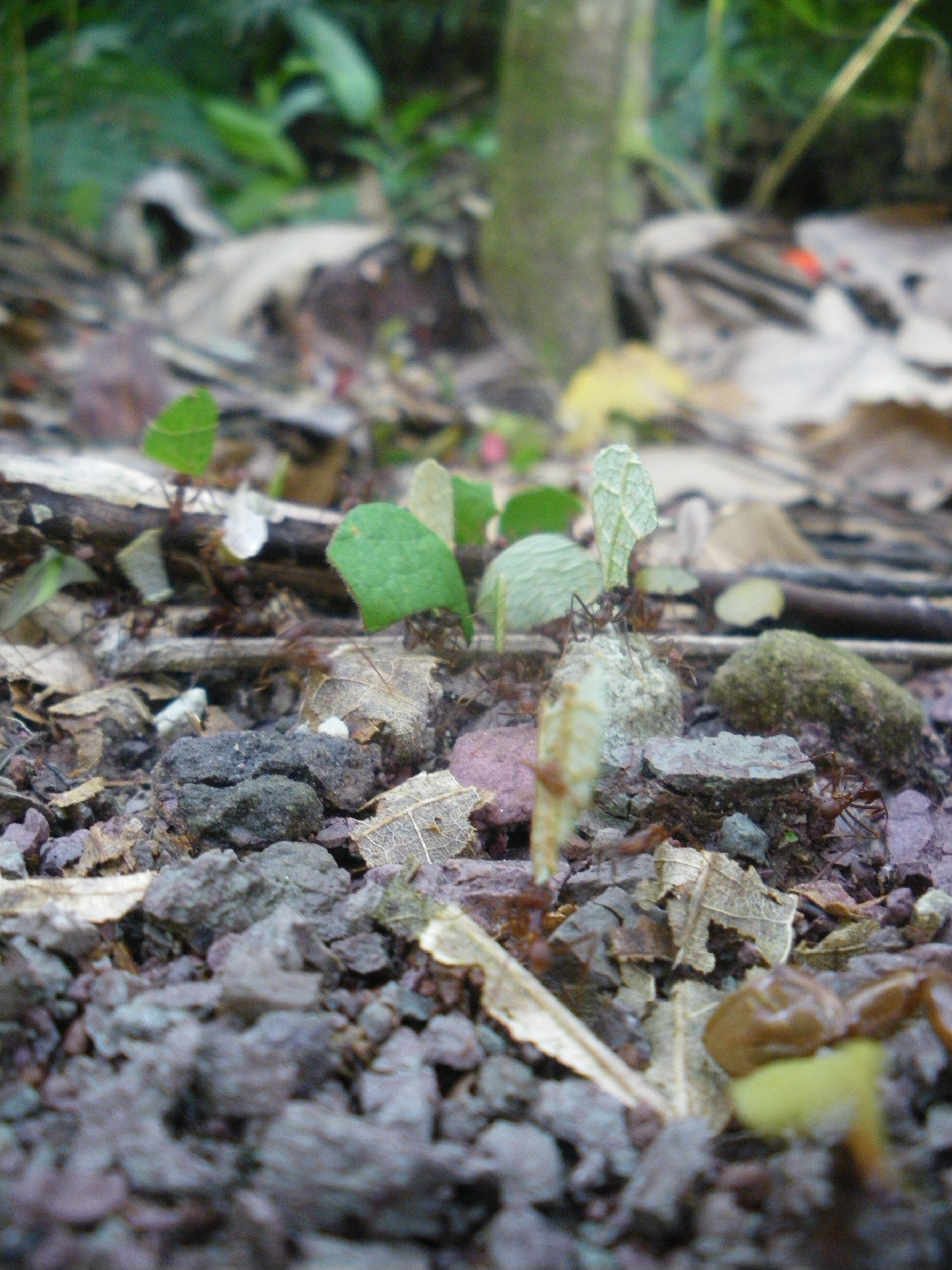
The following night, we moved our tent for the third time in three days. This time, next to a very tall tree near the edge of the campsite. Coming down this tree was a long path of leaf-cutter ants, each one carrying cutling of leaf in its pincers. The path extended down onto the ground and then away into the jungle for about 15 meters before it disappeared into the dense undergrowth and I couldn’t follow it anymore. This was a very nice surprise for me, having grown up playing with (torturing) the large red ants on my grandfathers farm and since developing a fascination for these industrious little creatures. The Amazon jungle seems to be an ant lovers paradise.
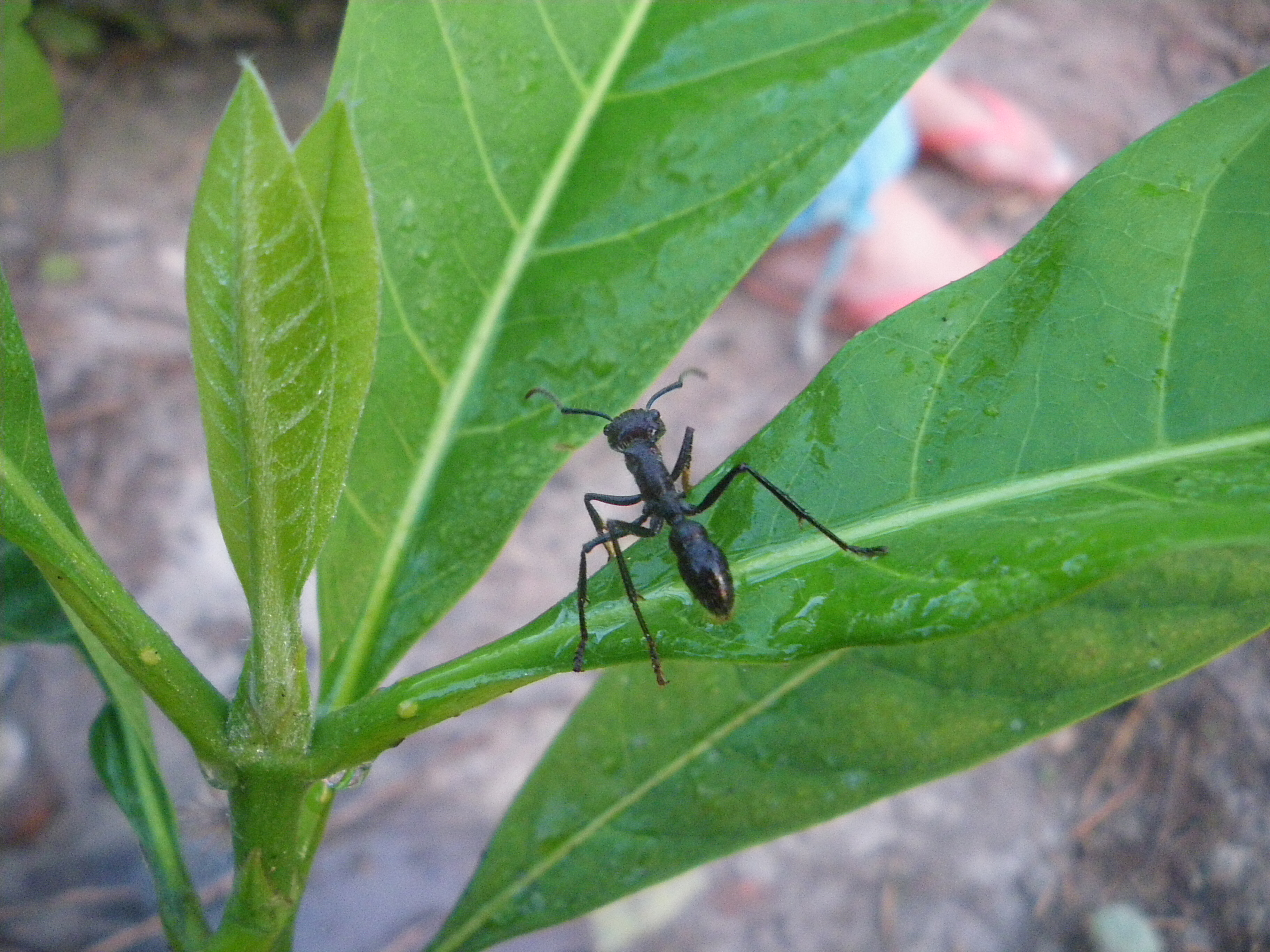
During our hike two days ago, Victor, our Peruvian guide, showed us a specific tree filled with very aggressive fire ants. These ants live in symbiosis with this tree and actively protect it from any invaders, for example such as the leaf-cutter ants. The other trees in the jungle are fair game for all kinds of insects, ants and mammals, but this specific tree is left unscathed.
Then there are the large (2 to 3 centimeters!) black solitary ants. They do not belong to any colony and are quite dangerous, with a bite that causes a nasty fever. In addition there were even larger reddish ants, whose backsides the natives cook in oil, and all kinds of flying ants.
17 September, Leaving to Cuzco
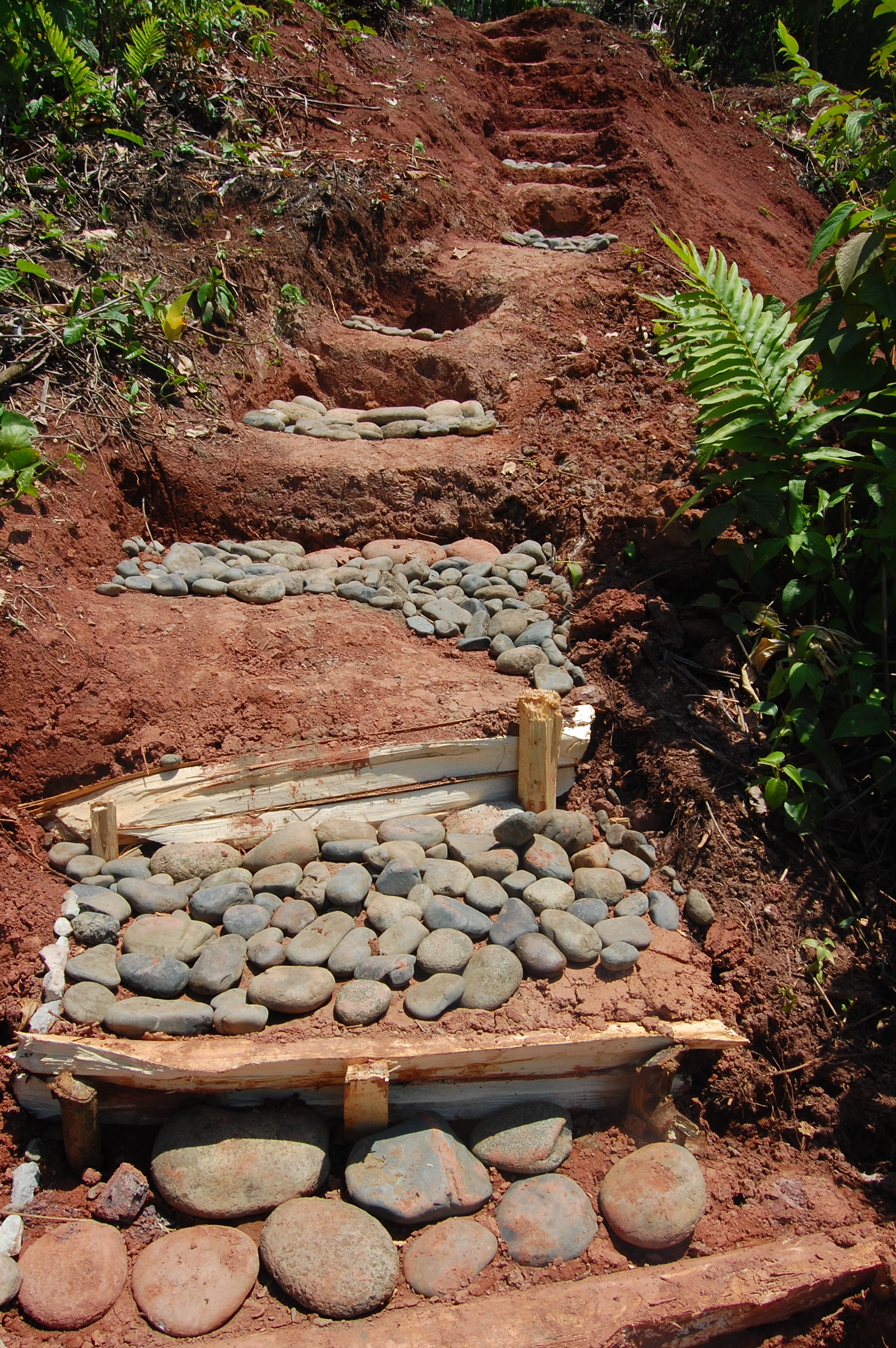
Our last morning in the jungle was spent carrying stones to cover the steps we built. Afterwards we all went for a fun and refreshing swim in the the river, letting the current take us to another riverbank downstream. Five minutes out of the river and we were again drenched in sweat as we packed our bags for the long trip back to Cuzco.
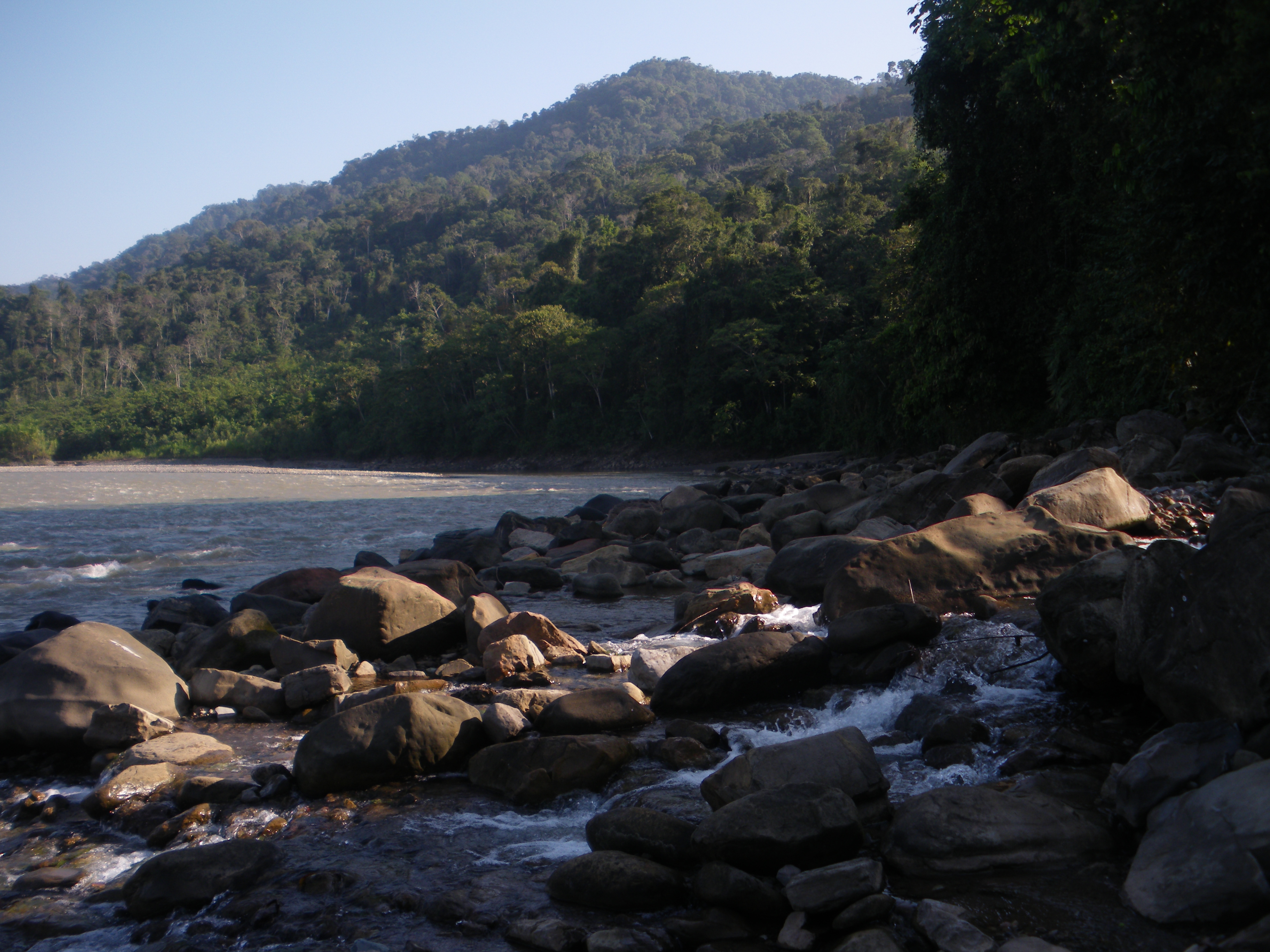
The bus smelled like sweat and coca leaves, and after arriving at the first roadblock, we understood why. There was a woman in in traditional clothes carrying a large bag, and when the police officer entered the bus she stuffed it under the large jumper she was wearing. As he passed her, she pulled it out and threw it across two rows to a friend on another seat, who hid it under his seat. The police officer took a quick look and left without any arrests, but more drama was to come as we entered Cusco.
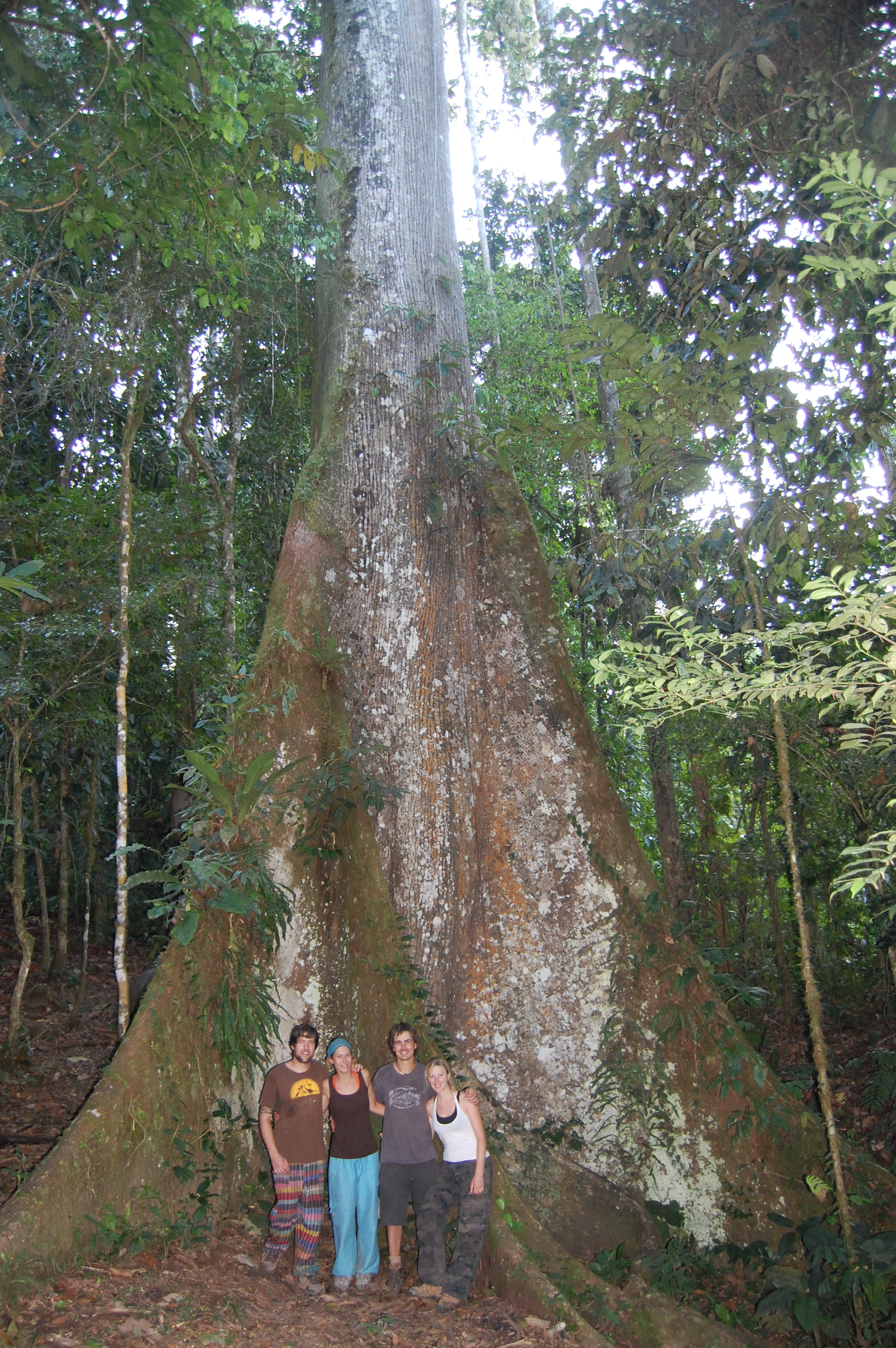
The second roadblock, about 4 o’clock in the morning, contained many more police officers and they were also quite a bit more aggressive. Four officers entered the bus and started searching through people’s bags. The woman who previously managed to hide her bag from the police wasn’t so lucky this time. Three officers stood over her and demanded to see the bag she was trying to hide. She just flatly refused however, and when one officer tried to take the bag, a pulling match broke out between her and the police. For what seemed like 20 seconds, the police officer tried to pulll the bag away from her as she clung to it for dear life. Ultimately, it was an quite entertaining if futile effort on her part to prevent them searching through her bag, and eventually she was arrested.
When we eventually left the bus at the bus station, about 5 o’clock in the morning, I noticed that the whole floor was covered in coca leaves. Apparantly, Peruvians are allowed to transport a certain quote of coca leaves on them, but the problem on the bus was that the people from the jungle were trying to transport coca above this quota.
18 September, Reggae party in Cusco
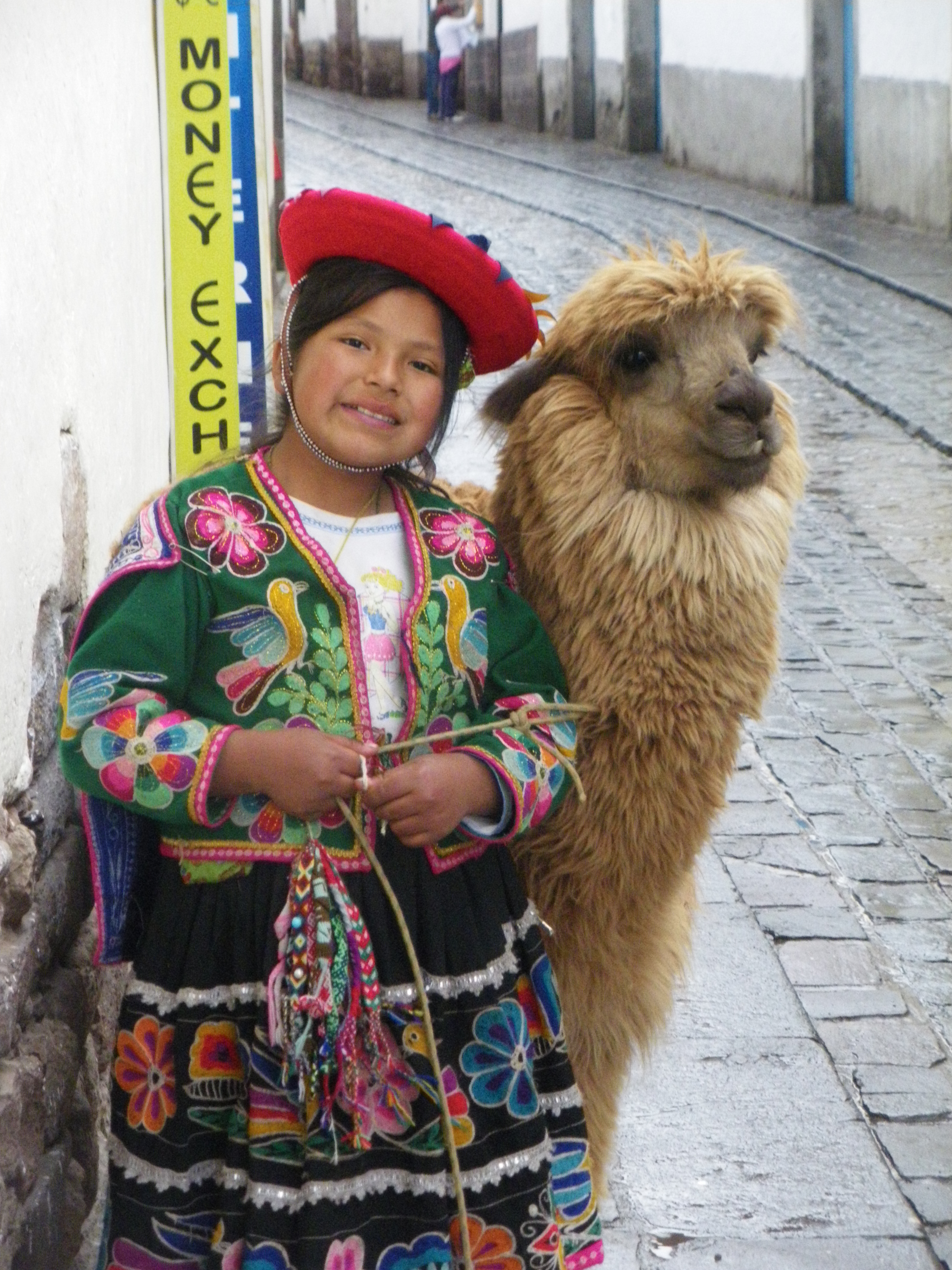
As this was our last night together with Tony and Sofia, we decided to celebrate and go out. We partied the whole night through in a club where a Reggae band played all the classics and time flew by.
We were definitely sad to have to split up with our new friends again as the four of us got along very well which can be rare while traveling.
Something for other travelers to take note of in Cuzco is a small vegetarian restaurant in Calle Ruinas named La Encuentro in Cusco. They offer the best lunch deal in town between the many tourist rip-offs (salad buffet and 2 courses of food plus a drink made, all made of organic ingredients for 6 Soles).
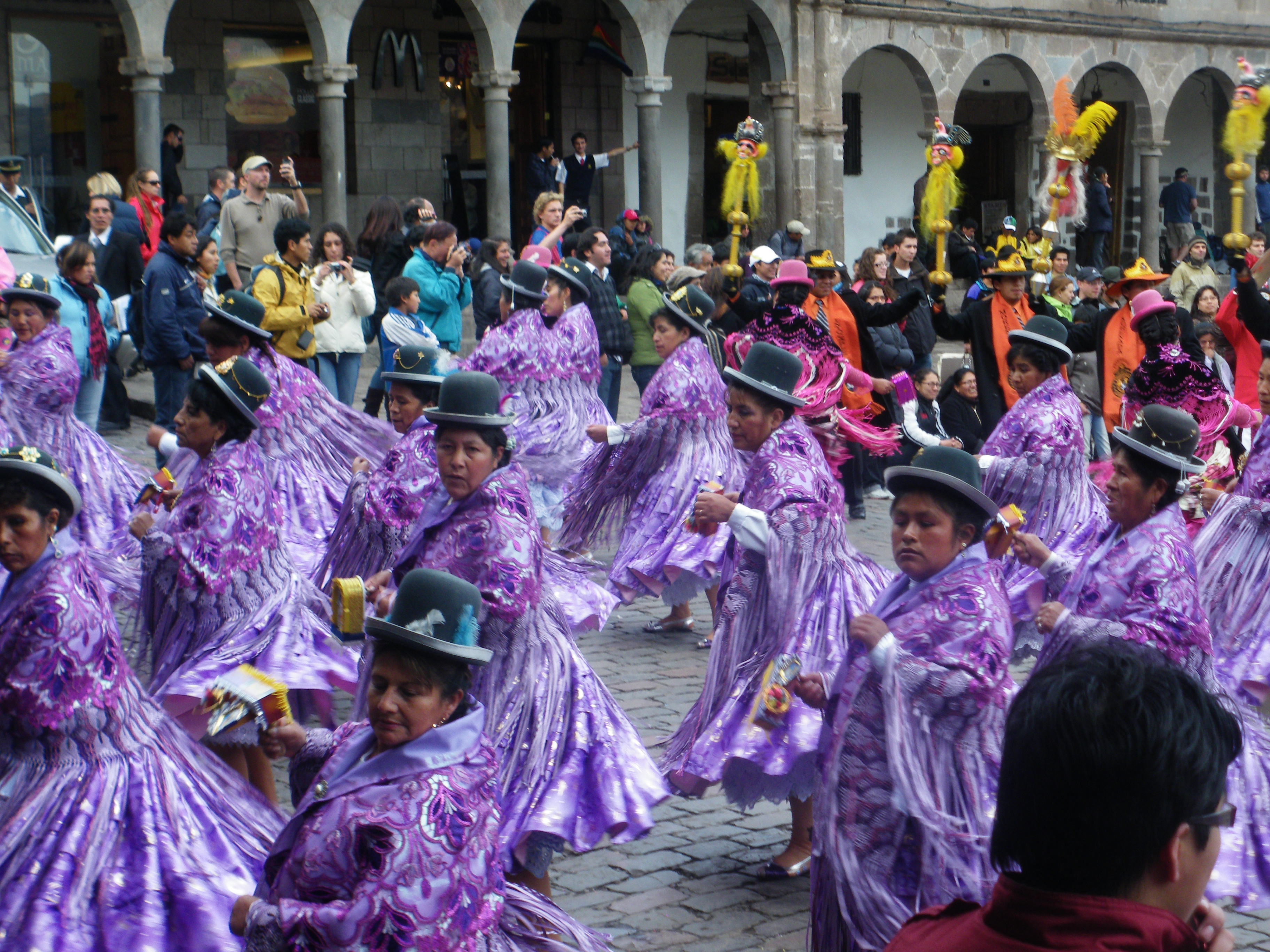
20 September, Leaving to Chile
For our trip to Tacna, on the border with Chile, we finally managed to book a Cruz del Sur bus, recognised as the best bus service in Peru. Not only that, but we also managed to get the mythical full cama bus with fully reclining seats. We’ve almost given up hope of capturing one of these elusive buses in South America, despite persistent rumours that they do actually exist.
During our stay in Copacabana, we went to a bus agency with large TurPeru (another good bus company) posters outside and booked what we thought was a full cama, TurPeru bus from Copacabana to Arequipa. We got however a crappy local bus with semi-reclining seats and a terrible driver schooled in the proud Peruvian tradition of bad bus drivers.
This time, things were different however. We arrived at the terminal, and there it was. An actual Cruz del Sur full-cama bus waiting for us. This was the most luxurious bus we took so far, with plasma screen televisions and large spacious leather seats, pillows, blankets, food, drinks and a clean bathroom. The bus is even monitored via GPS to prevent speeding, which is a welcome restriction to your average Peruvian driver’s natural impulse.
21 September, Tacna Peru to Arica in Chile
We drove 9 hours to Arequipa and then switched to another, less luxurious bus to Tacna. The landscape outside of Tacna is completely barren. This must be the place where they shot the Martian landscape scenes in movies like Total Recall. There is absolutely nothing growing in this part of the Atacama desert and it was quite a contrast to the lust Amazonian jungle in Manu national park. The air that finally manages to cross the high Andes is by then completely depleted of water. This results in the Atacama desert, the driest desert in the world.
Arriving in Tacna, we took the local bus to Arica for 10 Soles per person. Half the price that the Taxi drivers (apparantly Collectivo) at the bus station wanted. The bus was fine and crossing the border to Chile without incident as well.
Coming into Arica, we were stunned by the amount of Chilean flags we saw. Almost every single house and many cars had a Chilean flag (sometimes two) hanging on a mast. We weren’t sure what to make of this spectacle.
Arica has a pedestrian precinct on Avenue 21 de Mayo and it was interesting to see all the fashionable clothes shops, department stores and other consumerist havens which people in many countries take for granted but were quite scarce in Peru and basically non-existent in Bolivia. Almost all the shops were decorated with Chilean colours and flags and it was here that we finally realised that Chile was busy celebrating their 200 year independence anniversary.
21 September, Tacna Peru to Arica in Chile
Just outside our hotel is a mural with four graves, one whose cross throws the shadow of a swastika. One of the graves bears the inscription Augusto Pinochet, 1915-2006. Fuck, a reference to Chile’s brutal former right-wing dictator, whose regime was responsible for the deaths and dissapearances of tens of thousands of dissident Chileans. Shortly after coming to power after a military coup in 1979, he rounded up all the leftists and dissidents he could find and killed and tortured them in the local Santiago football stadium.
Incidentally, during the 1980s, he also had narrow relations with Israel and the Apartheid South African government. Chile is still coming to grips with the pain caused by his regime, and it was interesting to see this already on our first day here.
23 September, Arriving in San Pedro de Atacama, Chile
We were quite disappointed with San Pedro de Atacama. The town itself looks quite nice, with desert adobe style buildings and a bit of an alternative vibe, but this was all spoiled by the aggressive tour operators, accommodation, restaurant and bar promoters and sky high prices. The moment we got out of the bus, we were surrounded by 5 or 6 different people trying to sell us their accommodation. For the rest of our stay in the town, we would not be able to go outside without having to fight off various different sellers and promotors. Definitely not our idea of a nice time. The Lonely Planet mentions that San Pedro de Atacama is a town in which the tourism industry developed too rapidly (with all the negative aspects that this brings), and that is exactly how it appeared to us as well.
It was sad and a bit strange to see almost no authenticity in the town. We encountered almost no locals who weren’t trying to cash in on tourism. There were for example no school children walking home, or any other activity by the locals that might represent some kind of normalcy unaffected by tourism, except the sunday church service.

25 September, Bicycle ride to the valley of the moon
After an aborted attempt at cycling the 12km out of town towards the Valle de la Luna (valley of the moon) the previous day (we left too late to catch the sunset), we decided to try again one more time. To make matters worse the previous day, my bicycle broke and we had to walk back to town. So, instead of going to KMZ, were we were before, we went to another and even cheaper shop, where we rented the bikes for half a day at C$3000 (€4,50).
We biked out of town for about 5 kilometers, until the entrance to the valley of the moon, from where it was another 7 kilometers on a relatively flat gravel road that curves to the right and then ends after a ramp up and into the canyons. We weren’t the only ones going there, but just about the only ones going by bike. Quite a lot of buses and cars passed us by as we huffed and puffed cycling against a strong headwind.
We eventually reached the lookout point and watched the sunset, still being relatively stressed after a negative hostel experience earlier in the day. The landscape is quite pretty and we felt that renting a pair of bikes to get there was probably our best option. San Pedro de Atacama offers quite a few scenic places to which the many tour agencies would be quite happy to drive you, but the tours (as with most things in the town) are all overpriced in our opinion.
Concerning our negative experience earlier in the day, suffice to say that we would NOT recommend staying at Corvatsch hostel. The staff were all rude and unfriendly and there was a dark cloud of negativity hanging over the place from the moment we arrived. The guy who runs the place is hands down the biggest asshole we met in Chile (people in general actually being quite friendly and nice) who even physically threatened a fellow roommate of ours after he objected to his female friend being shouted at. Eventually, our whole dorm of 6 people demanded our money back, packed our stuff and left for another hostel.
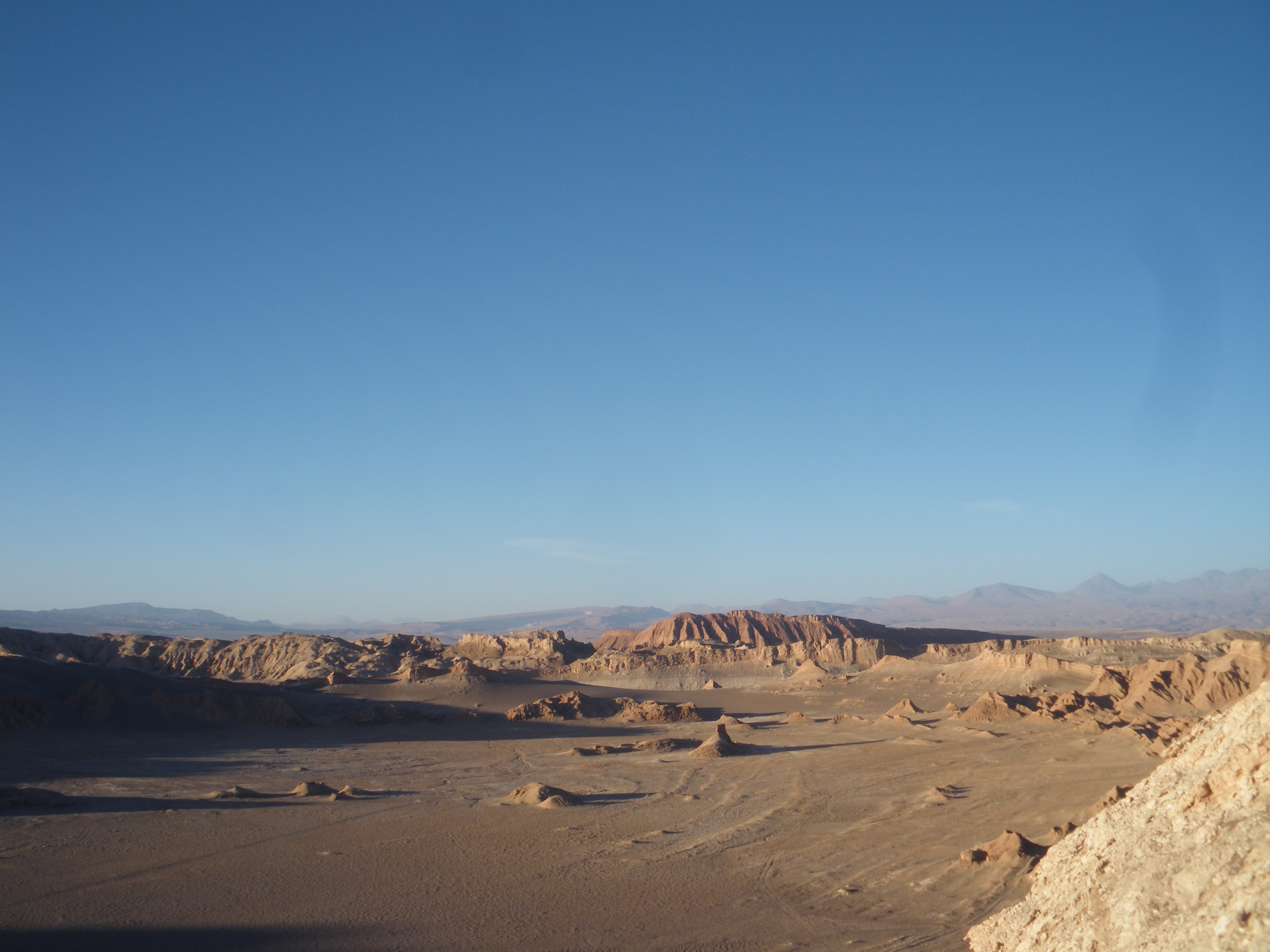
26 September, Back to Bolivia and Salar de Uyuni
During our last stay in Bolivia, we were prevented from going to the famous Salar de Uyuni, the largest salt flat in the world, by discontented miners and other Bolivians from the Potosi district. They had blockaded the roads outside of Potosi as well as the small town of Uyuni with stones and dynamite, effectively imprisoning the whole town populations and preventing anyone else from getting in. The story made international headlines because a group of about a hundred tourists were stranded at the Uyuni airport while the food stores of the town ran low.
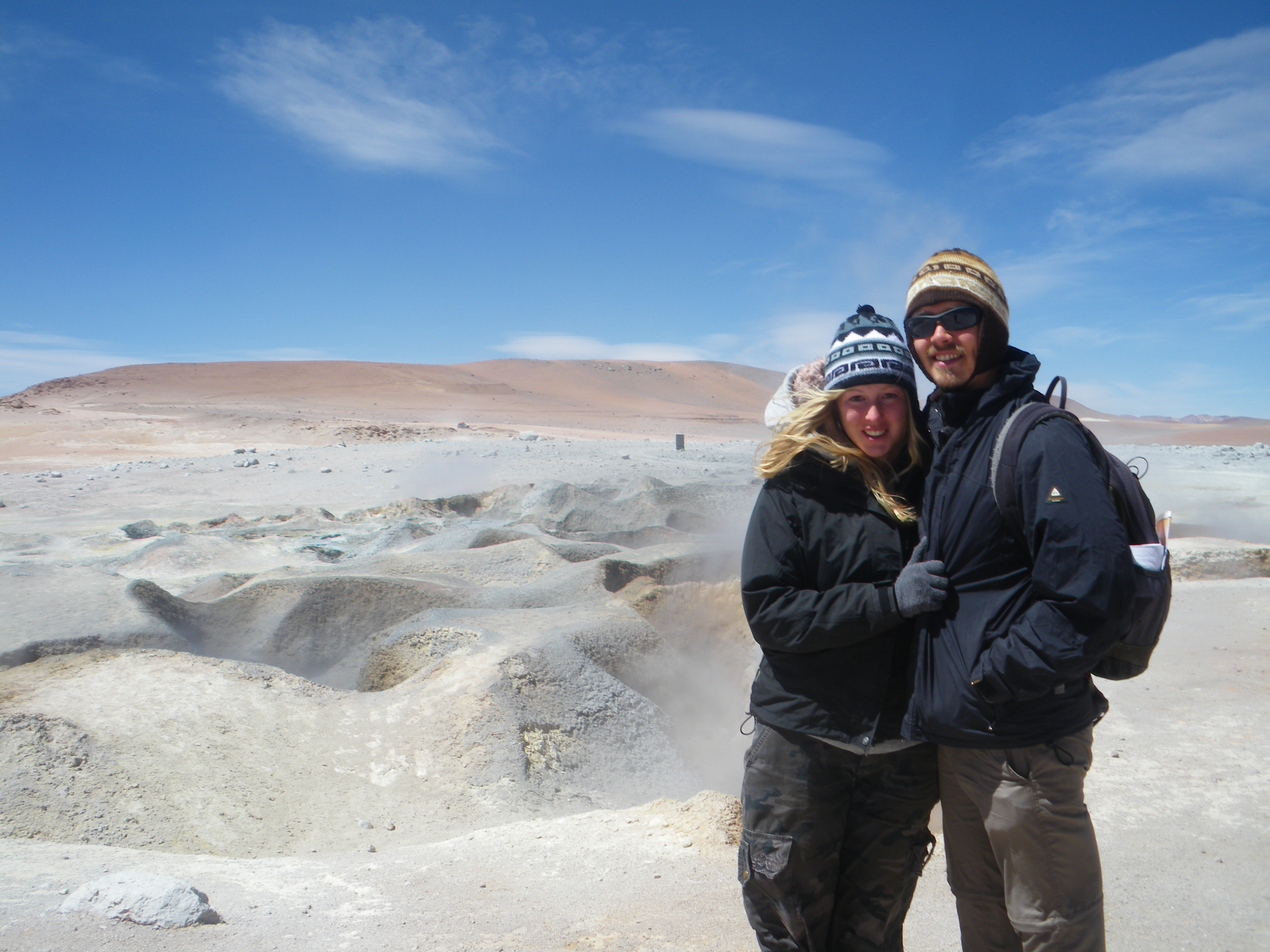
We waited a few days extra at Sucre, hoping that the dispute might be resolved soon, but eventually realised the gravity of the situation and went to La Paz instead. You might expect that as the situation worsened, the tourists in Bolivia might be dissuaded from trying to get into Uyuni, but for some of them, it did exactly the opposite. People paid outrageous sums of money for private jeep transfers all the way from La Paz, to try and circumvent the roadblocks, just about the same time as the stranded Uyuni tours tried to escape via small chartered flights. At least one time they were unsuccessful, with protesters laying rocks and dynamite on the airport runway.
So, here we were about a month later and things seemed to be back to normal in Uyuni. This time we would enter from the Chilean border (close to San Pedro de Atacama), and drive through the Bolivian Altiplano (high plateau) desert with it’s harsh cold weather towards the salt flat itself.
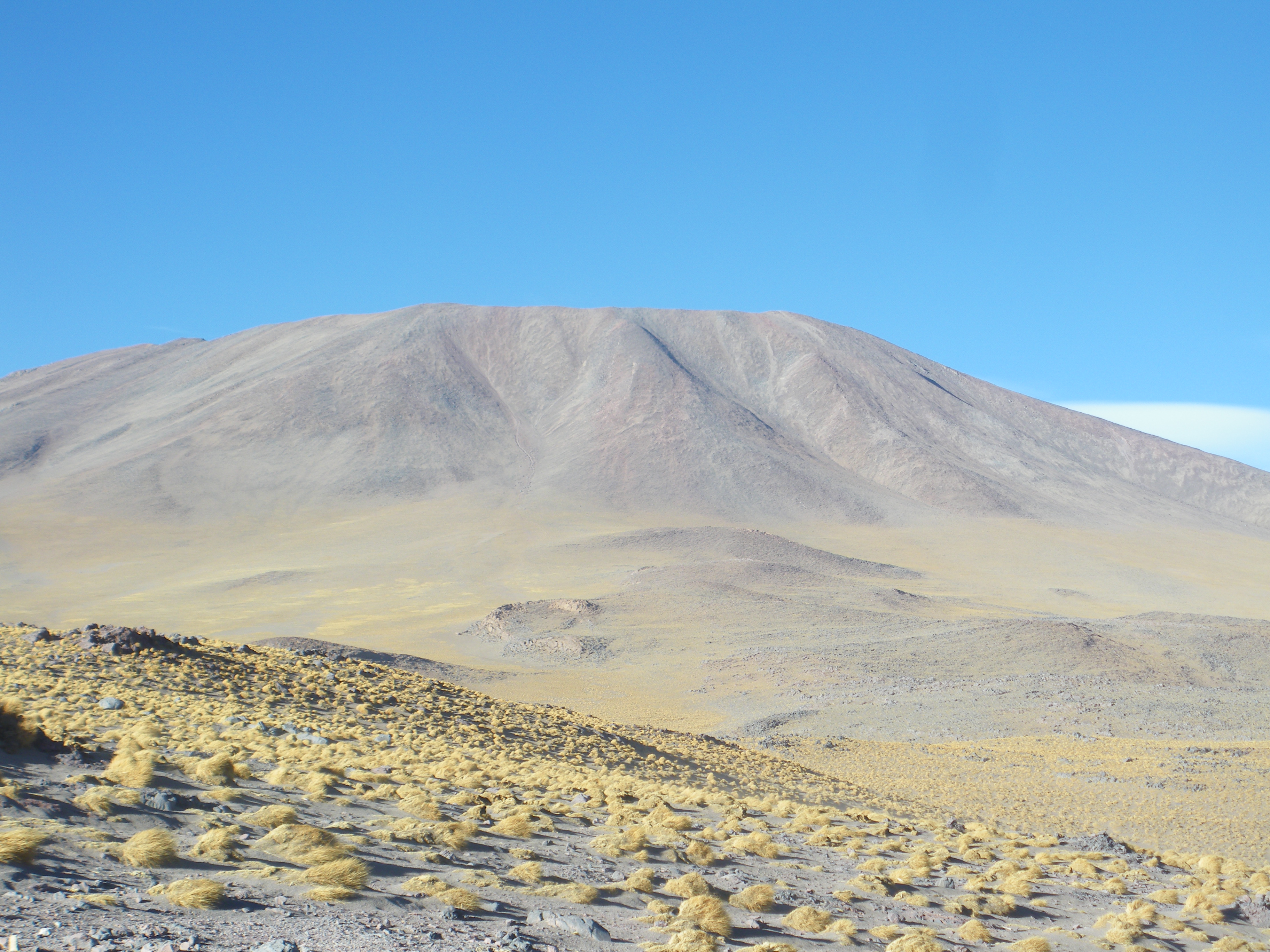
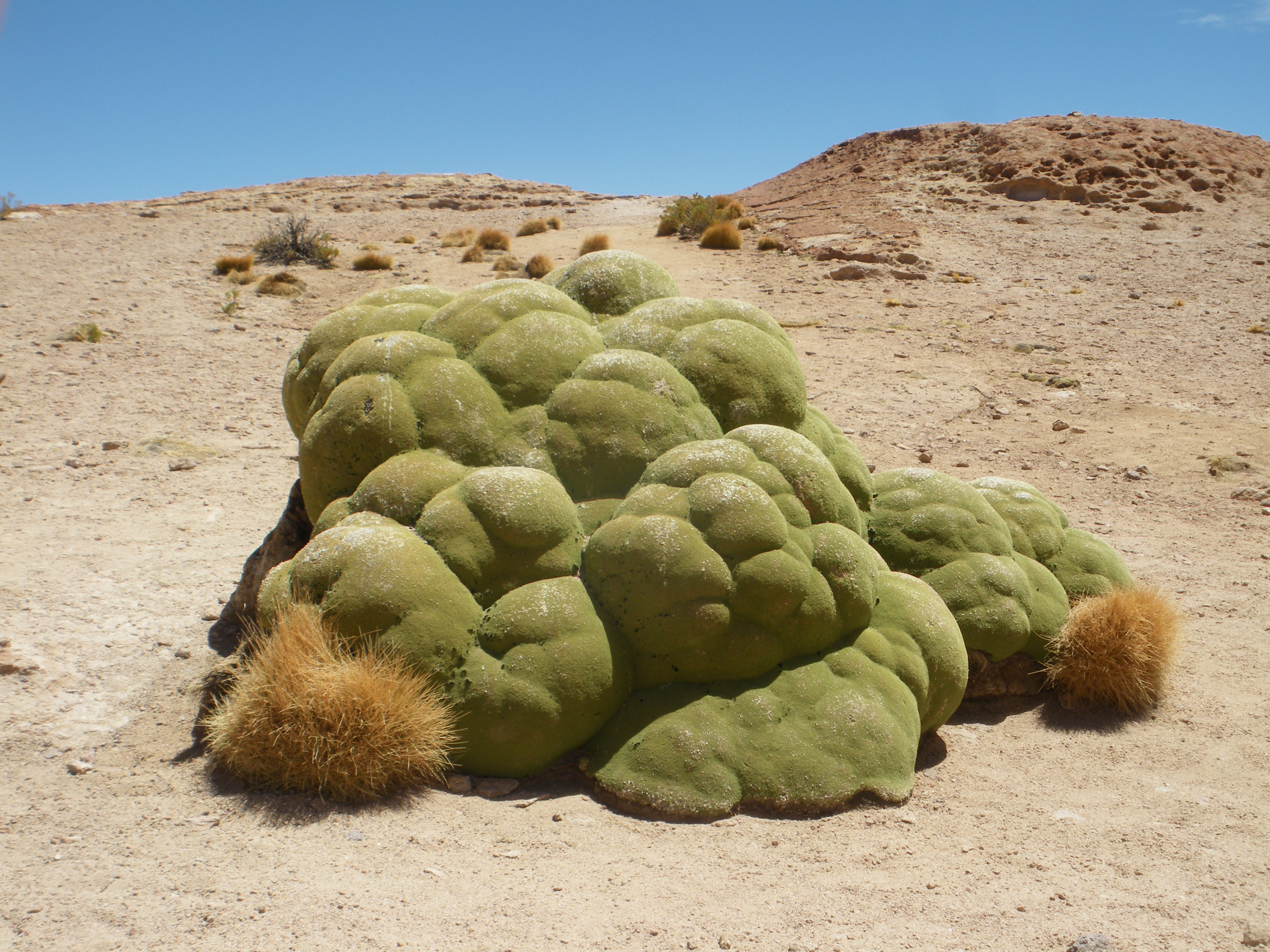
On the first day, we drove with the Licancabur volcano in the background, towards sulfur spewing geysers and hotsprings where we took a dip in the 35° water. We then continued past green and turquise coloured lakes towards the spectacular Laguna Colorada (red lake), where we would overnight at a house nearby.
For the whole day the wind was blowing with incredible force, blasting sand into your face and eyes, while temperatures hovered just above freezing point. Nevertheless, Manuela and I decided to take a walk towards a lookout point near the red lake. The wind was behind our backs making things a bit easier as we walked through the small tough gold-coloured bushes (basically the only vegetation in the area) past a herd of Vicunyas (cousins of the Llama) on the one side and pink flamingoes on the other side.
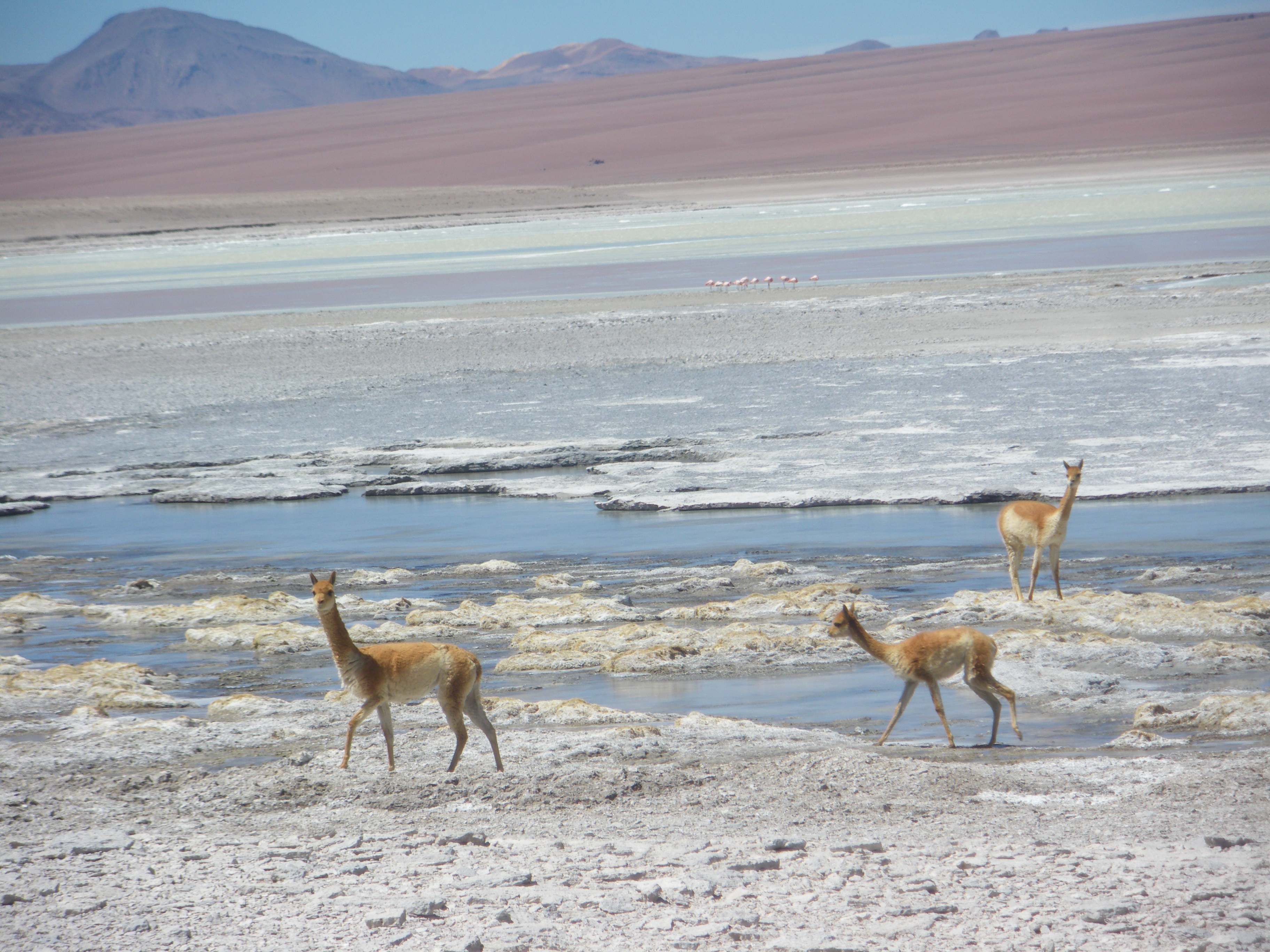
Walking back towards our lodgings was a different story however. The wind was blowing against us with full force, freezing our exposed skin and hurting our eyes. From time to time we would turn around and walk backwards for a while, before we would get tired of the slow pace and make another attempt at trudging against the wind. This might have been more frustrating, if not for the fact that we were enchanted by the harsh but beautiful landscape around us. Parts of Laguna Colorada’s waters were a truly blood-coloured red, creating an impressive contrast to the gold coloured wind-swept hills.
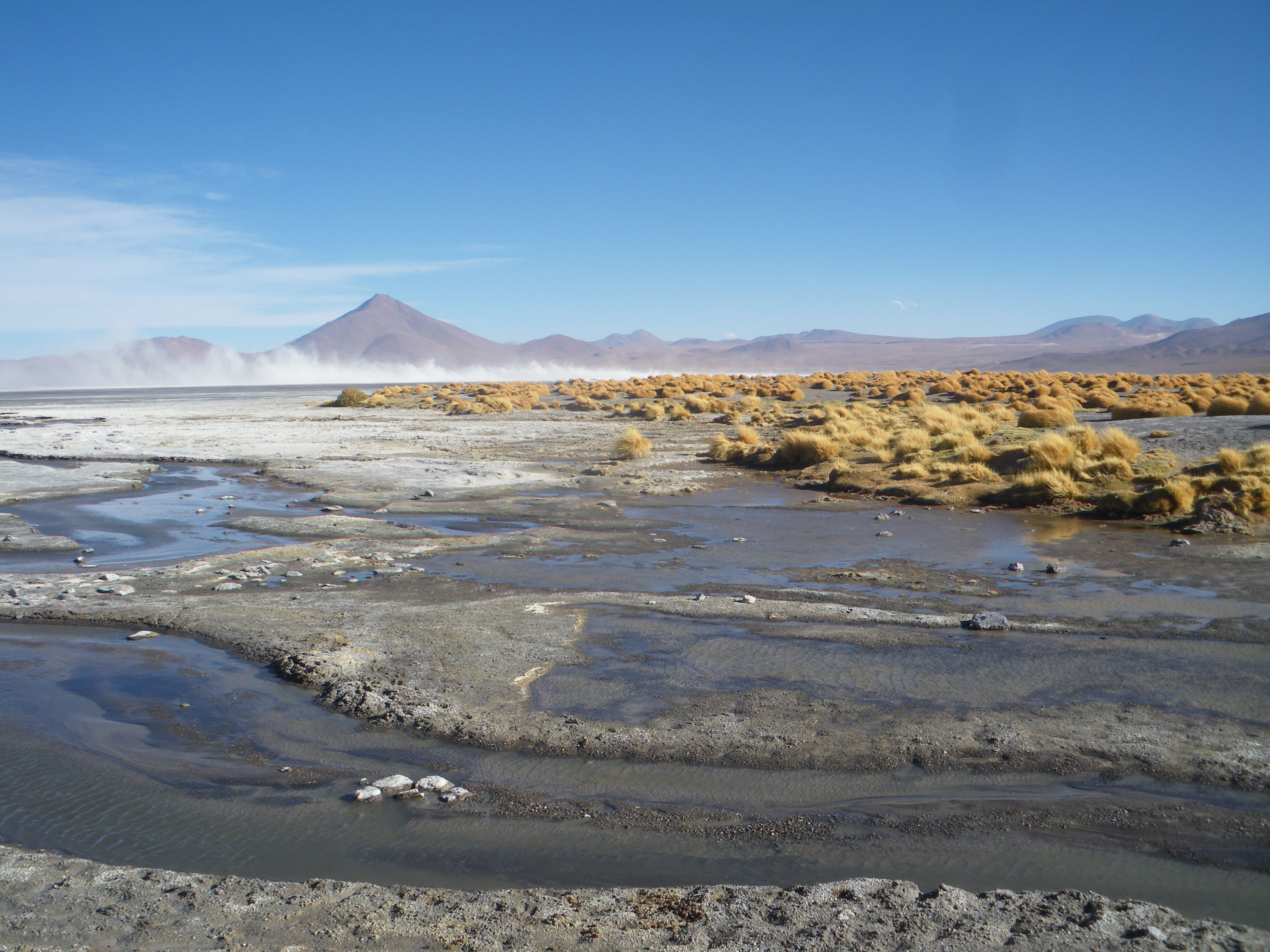
27 September, Salar de Uyuni
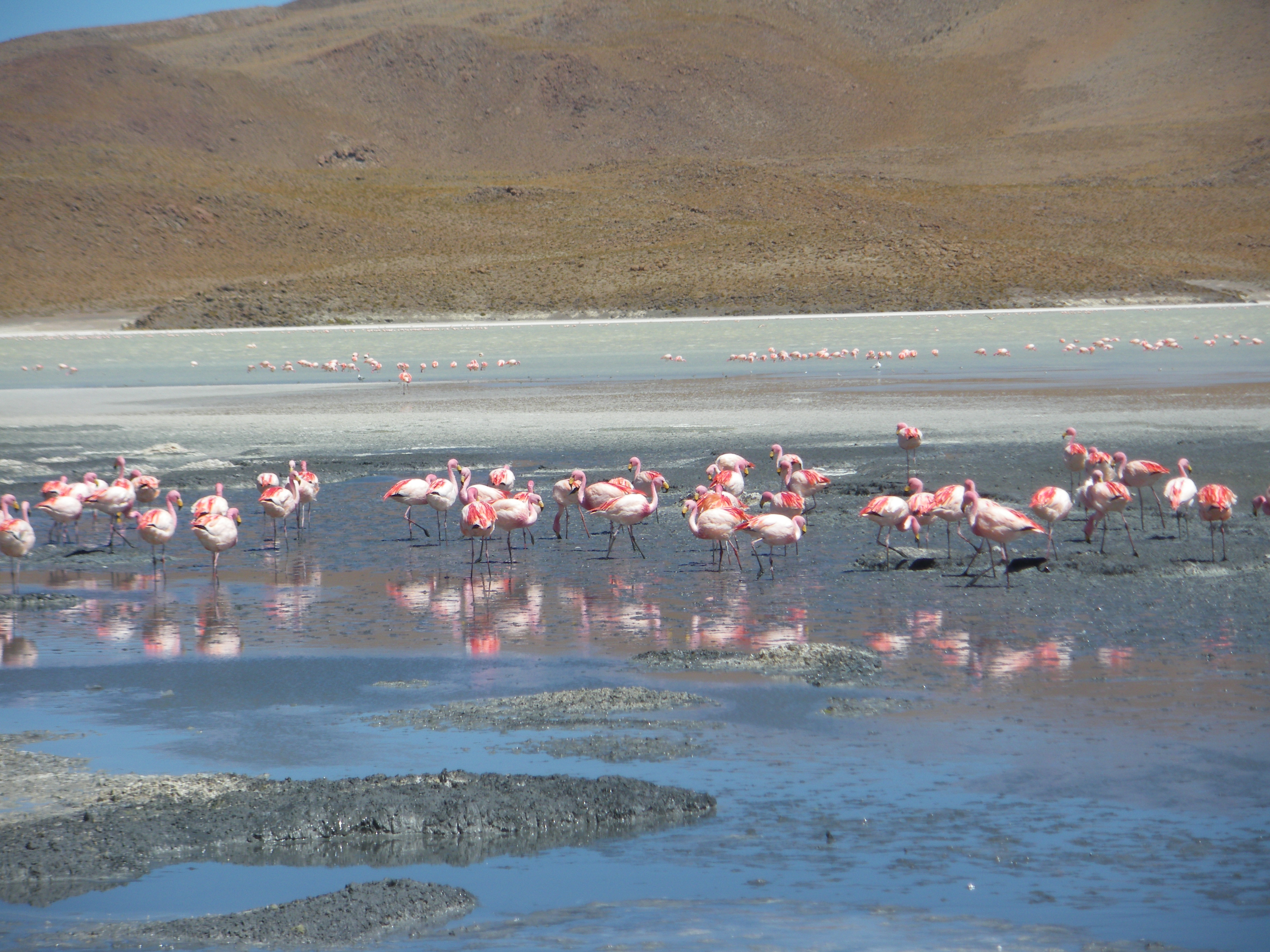
All the tour operators in Salar de Uyuni make use of Toyota Land Cruisers, as they are the only vehicles able to handle the rough terrain coupled with the extreme height above sea-level (well above 3500m up to more than 5000m).
On the second day our old Land Cruiser shook and bumped its way past more coloured lakes, vicunyas and pink flamingos. We had a flat tire just after lunch, and then another one near the end of the day, which left us stranded and hoping that another tour group would soon pass and help us out.
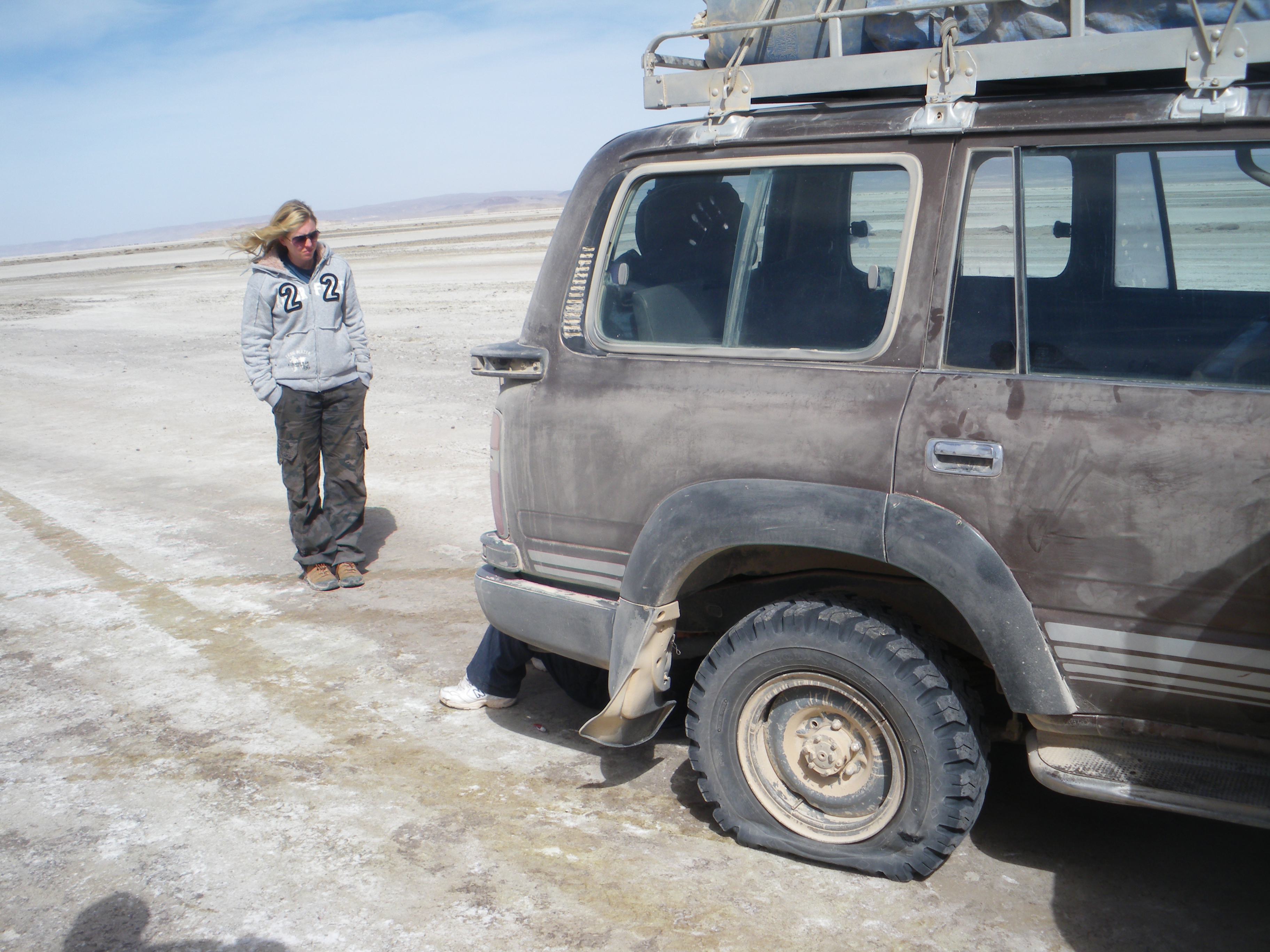
In the end, we were very lucky and only had to wait about 15 minutes before another Land Cruiser arrived from whom we could get a spare wheel. We slept the night in a salt hotel, a bit of a gimmick, but still kinda cool.
Flavio, our excellent guide and driver, spent most of the evening patching and fixing the two burst tires. Before we embarked on the Uyuni tour we were a bit concerned, having heard numerous stories of drunk and sometimes abusive drivers. Luckily this didn’t turn out to be a problem for us and we were very impressed with the one that we had.
We booked the tour through a Chilean tour company called Tierra Mistica, and could recommend them to other travelers.
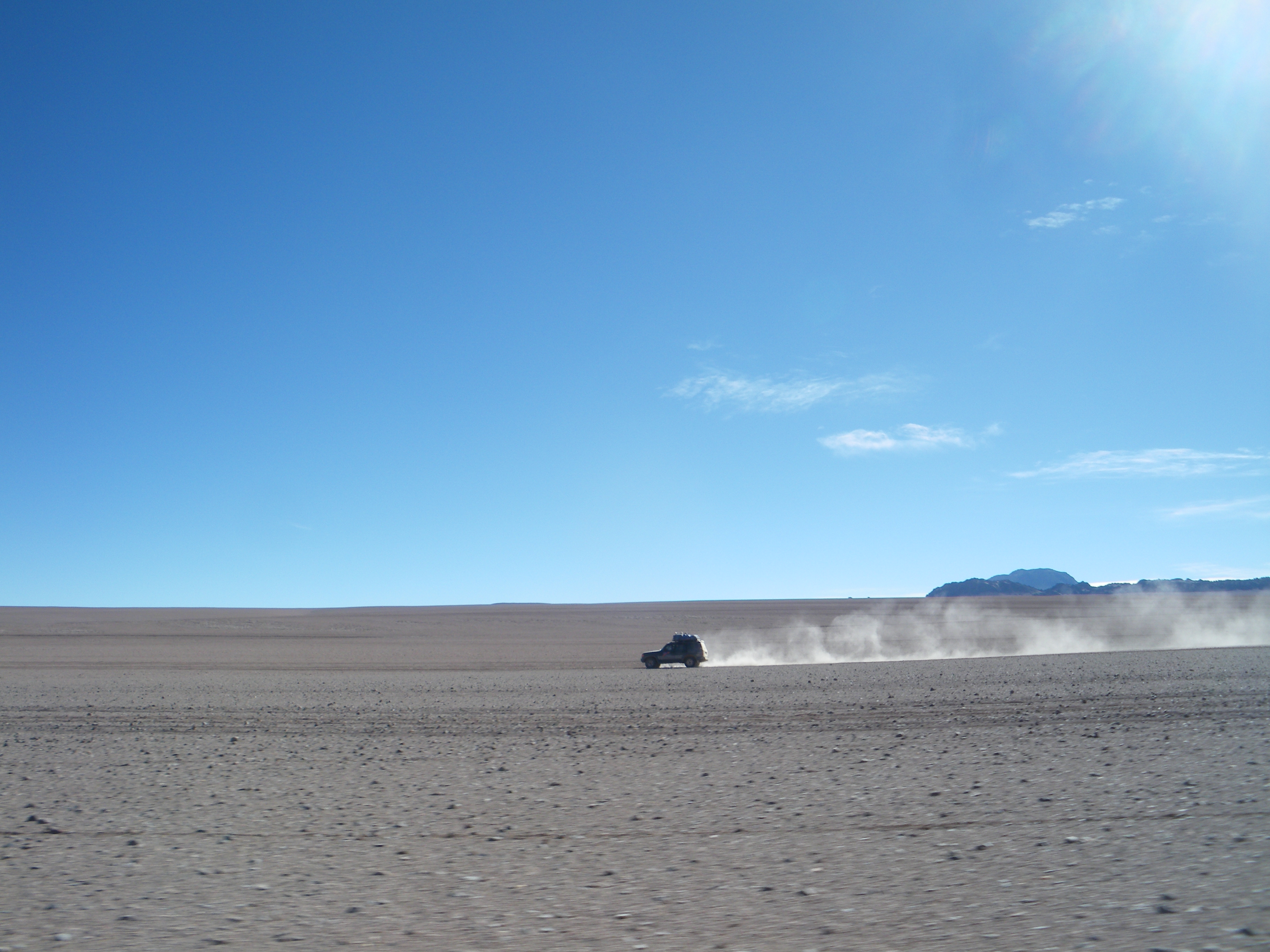
28 September, Salar de Uyuni
On the final day of the Salar de Uyuni tour we finally reached the actual salt flat. The salar is actually the remnant of an ancient prehistoric inland sea and is almost completely flat. In fact, it’s probably the best driving surface (if not actually a road) in all of Bolivia!
In the middle of the salar lies Incahuasi (meaning house of the Inca’s), an outcropping refered to as the “island”. The island is covered in large cacti, and still has the remains of the ancient coral reefs that grew there when the whole place was under water. It must have been an awesome place for scuba diving.
You can easily lose your perspective in the Salar, making it possible to take all kinds of silly photos. I broke off a piece of salt from the ground and put it in my mouth. It was salty, but not as extreme as a clump of table salt would have been.
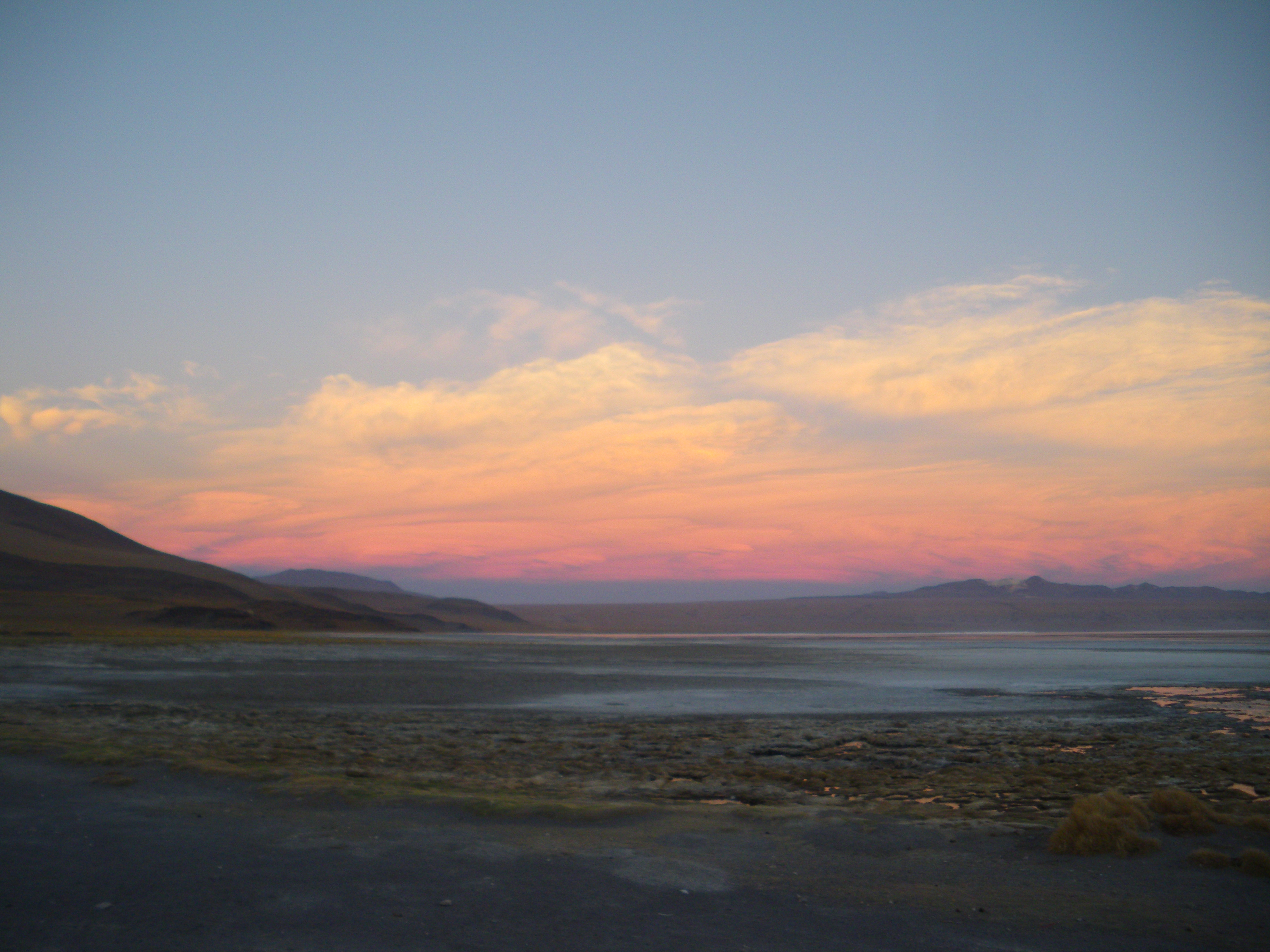
29 September Tupiza, Bolivia
We arrived in Tupiza, the previous night after hitching a ride with a driver from Tupiza tours who also just finished a Salar de Uyuni tour. He dropped us off at Hostal Horizon Colorado and after some unsuccessful haggling we settled on a private room with three beds, a television, private bathroom with mirror and a waste basket (almost always lacking) for less than half the price we paid for the shitty 6 bed dorm in San Pedro de Atacama (about €7,40).
Next to our hostel is a salon de belezza (beauty salon) and, in typical Bolivian fashion, with a nameboard that looks like it was designed (I use the word quite liberally) using Microsoft paint and some standard fonts together with a few images of women collected from the web. One of the “women” actually being a picture of a Barbie doll. Whatever happened to subtlety?

From the getgo we felt quite happy and at home in Tupiza and despite our earlier reservations, we were enjoying it to be in Bolivia again. So far we’ve managed to avoid any buses and the people even seem a bit friendlier than before. Either because our Spanish skills are improving or perhaps because Tupiza is just a friendlier town. It’s a pleasure walking around town again, visiting the local markets with their wide variety of fresh produce, cheap clothes from China, offerings to Pachamama and almost anything else that the townsfolk might need.
It’s also one of the more authentic towns we’ve come across so far. Especially compared to San Pedro de Atacama, where it feels as if every single inhabitant is greedily contemplating how to make (more) money out of tourism. In Tupiza, the locals go about their daily routines (like selling llama fetuses for example), largely oblivious (or at least tolerating) the odd gringo to come across their path. So far we’ve spotted about 12 other gringos after criscrossing the entire town. Gone are the kitsh tourist shops, restaurant and bar promoters pestering you to enter their establishments and of course the swarm of tourists who would otherwise with their presence enable all these things to happen. It’s like a breath of fresh air.
30 September Horseback riding in Tupiza, Bolivia
Tupiza really has some amazing surroundings, perfect for donning a cowboy hat and heading out on a horse. We rented two Argentinian horses and set off with our guide on a 7 hour ride out into the area.
Turns out, our “guide” was a thirteen year old boy. Perhaps this was not strictly legal, and it would be unthinkable in Germany, but he seemed to know the area and how to ride a horse and in Bolivia that already counts for a lot.
1 October, Leaving for Córdoba, Argentina
After our horseback-riding adventure of the previous day we were ready to leave to Córdoba in Argentina. This would mean 3 hours in a local bus until the Bolivian-Argentinian border, and then another 18 hours in an Argentinian bus until Córdoba.
We went to the bus station two days before to find the bus schedule and perhaps so long book a bus to the border, but when we arrived there we saw an agency for a bus company called Balut, whith large photos of a big gold bus with the letters Cama Gold written across it. The other bus agencies had paintings of buses if anything at all. Not exactly something that instills confidence.
We entered the little Balut office and asked the lady some questions. “Yes the bus is full-cama (meaning luxurious and fully reclining) and looks like the gold one on the picture”, “Yes, lunch and dinner will be served on the bus.”, “The bus will leave from the border at 19:00 and will take you through border controls”, and so on. Wow, this seems great!
Well, aftrer taking another dilapedated old local Bolivian bus to the Villazon, we were still optimistic and looking forward to the gold coloured luxury full-cama bus that will be taking us from there to Córdoba.
We enter the Balut office in Villazon, see more pictures of gold Balut buses crossing Argentina and ask for our tickets. Turns out however that just about everything we were promised before was bullshit. The bus isn’t full-cama, isn’t gold and looks nothing like on the pictures. It will leave later than originally told and there won’t be any meals served on the bus. And lastly, it doesn’t take us through border controls, we have to walk there (or take a taxi) ourselves. Ah, good old Bolivia, that was again, what people warned us of before!
October, Cordoba in Argentina
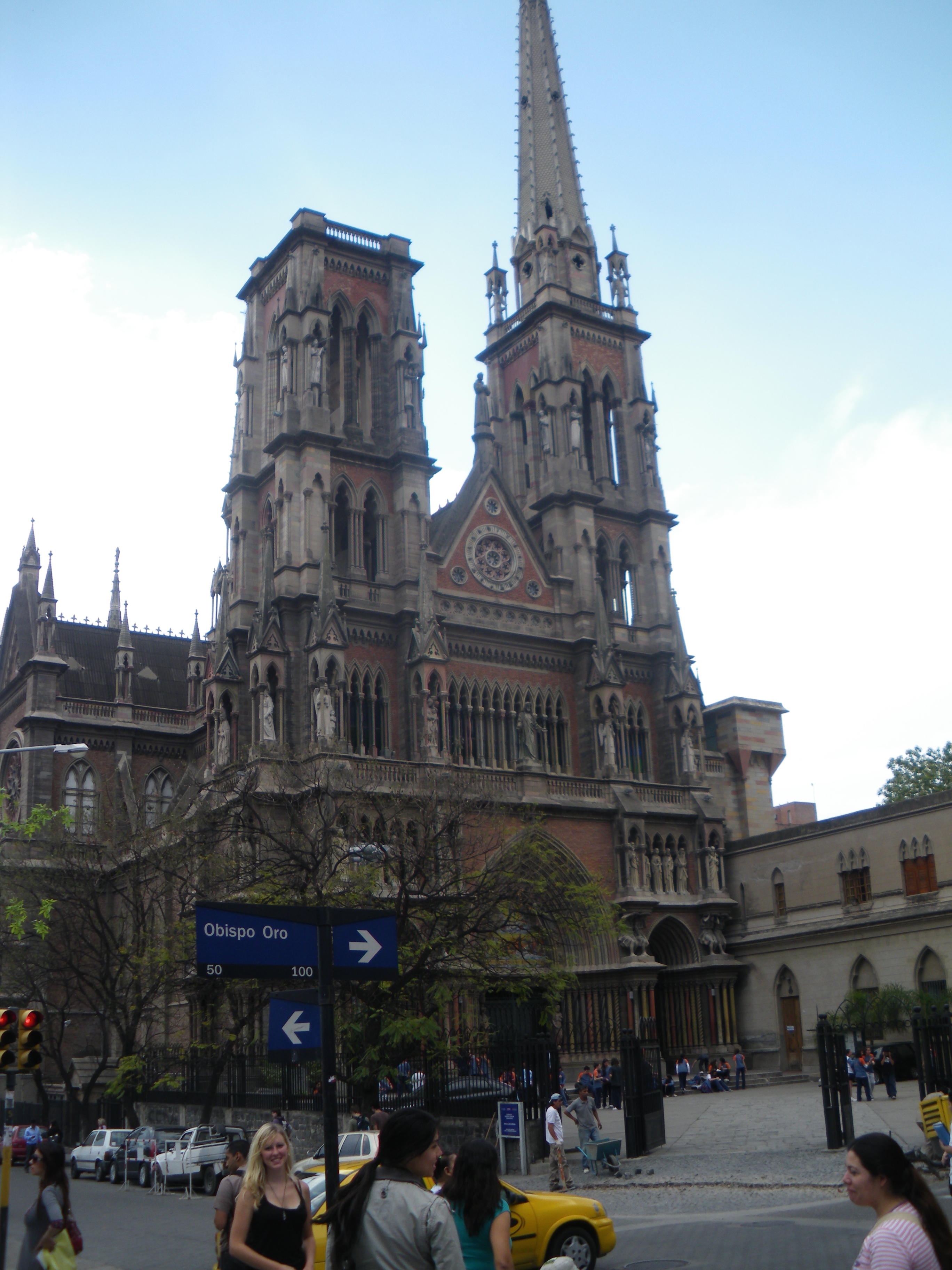
It’s alread October by now and we have since left Bolivia for Cordoba and Buenos Aires in Argentina.
Cordoba is a fascinating and culturally rich city with seven (7!) universities. We spent a lot of time just walking through the city center, checking out the bakeries, coffee shops, malls and other amenities that we’ve since learned to appreciate.
Roberto Allende and the guys from Menttes invited me out for dinner and I was served the largest steak I’ve ever seen. Covered with two fried eggs for good measure.
Roberto’s lovely wife and their 2 month old son also accompanied us, giving Manuela the chance to hold and play with the baby, while we discussed frameworks.
The next night we met up with the Javier Mansilla (whom I met earlier at the Budapest Plone conference) and his colleagues at Machinalis and enjoyed some Picadas with Argentinian beer and more wine.
We agreed that the Plone ties between Argentina and South Africa need to be strengthened and I intend to return home with just that message! Thanks for the friendly hospitality from all the Plonistas in Cordoba!
October, Buenos Aires Argentina and then off to Cape Town!
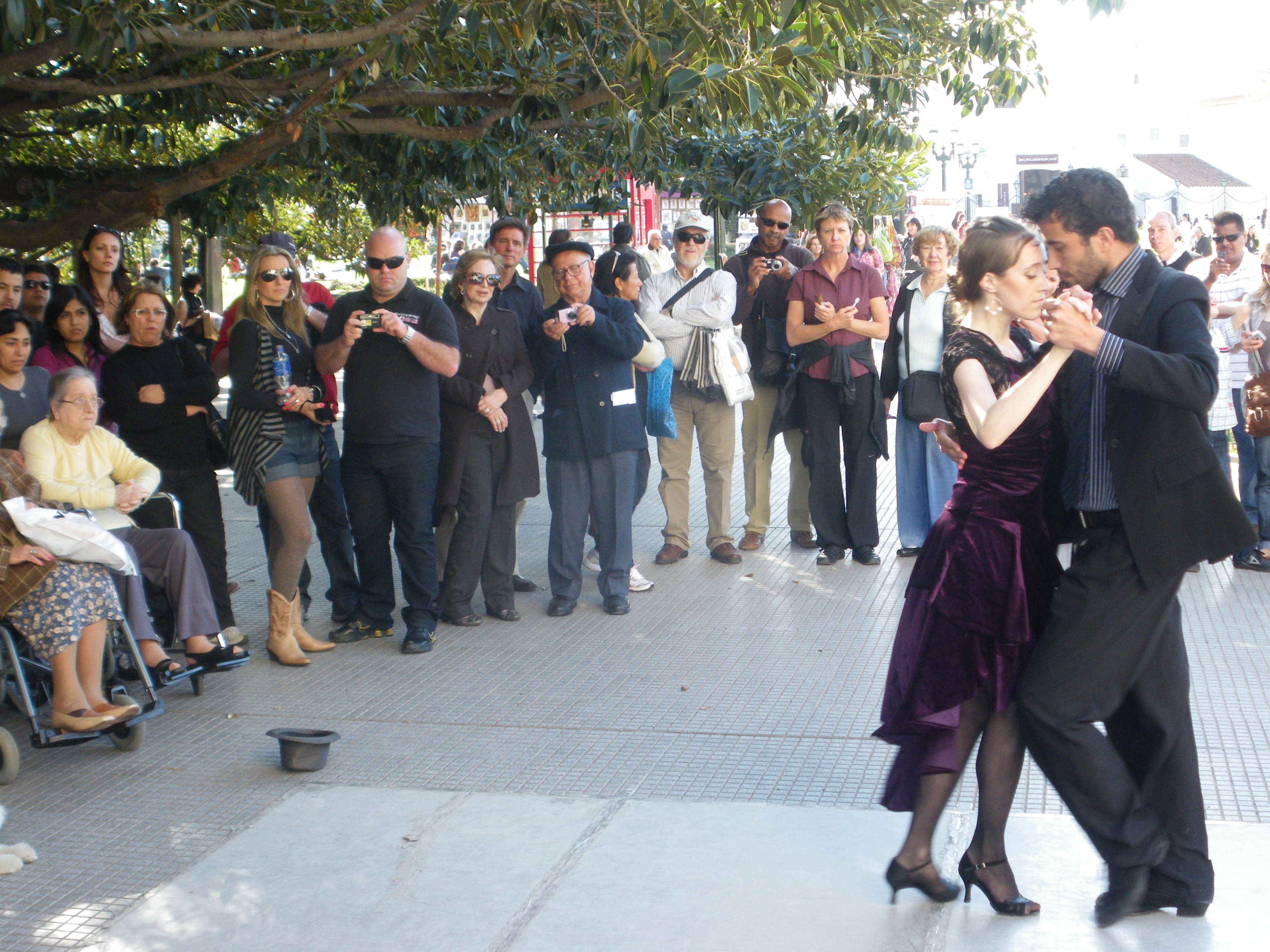
We had high hopes for Buenos Aires after hearing so many good stories from friends and travelers and I’m glad to say that we weren’t disappointed in the least. Tango in the streets, more good steak, friendly people, good infrastructure, great nightlife, and an old and interesting city center; Buenos Aires really has a lot to offer.
The Argentinians close all the shops around lunch until about 16:00 to allow for a fiesta, which took a bit getting used to as we tended to start going out to town at around lunch each day. Because of this, the Argentinians also go out much later. We would arrive at a restaurant at 21:30 and be the only customers there. Then, at about 22:30 the locals arrive and at 23:00 it’s full! In Germany many restaurants would have by then already closed the kitchen.
We have three days left in Argentina before flying to Cape Town and starting a new chapter of our lives in South Africa. I am still enjoying Buenos Aires, its culture of Gauchos (Cowboys), Tango and late night dining, but also filled with excitement at the prospect of going home for the first time in two years and at seeing old friends and family again.
From myself and Manuela, who had contributed lots of insights, corrections and stories to this blog, I would like to say, thanks for reading and “Adiós Chicos!”
Hello, I'm JC Brand, software developer and consultant.
I have decades of experience working with open source software, for governments, small startups and large corporates.
I created and maintain Converse, a popular XMPP chat client.
I can help you integrate chat and instant messaging features into your website or intranet.
Don't hesitate to contact me if you'd like to connect.
